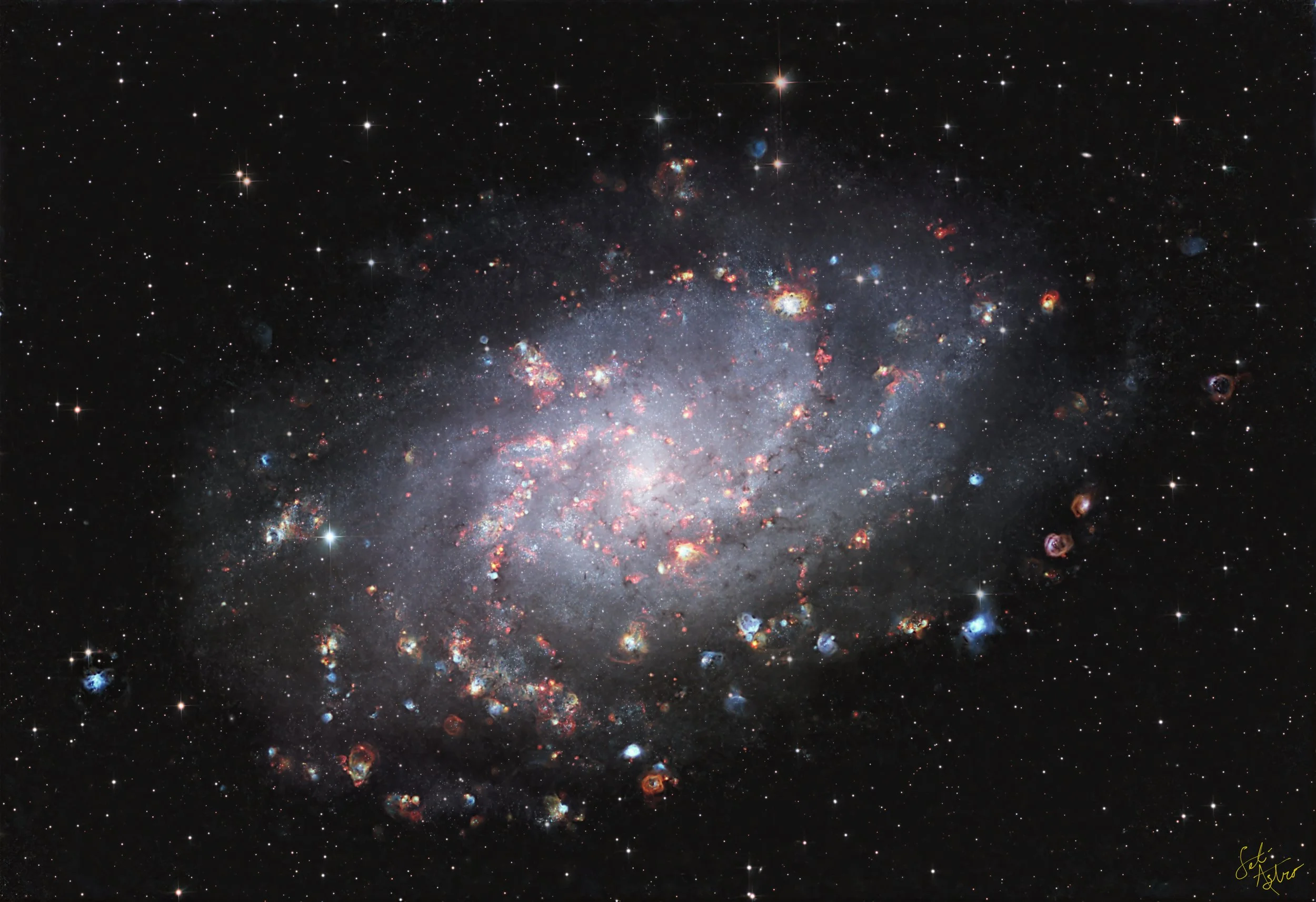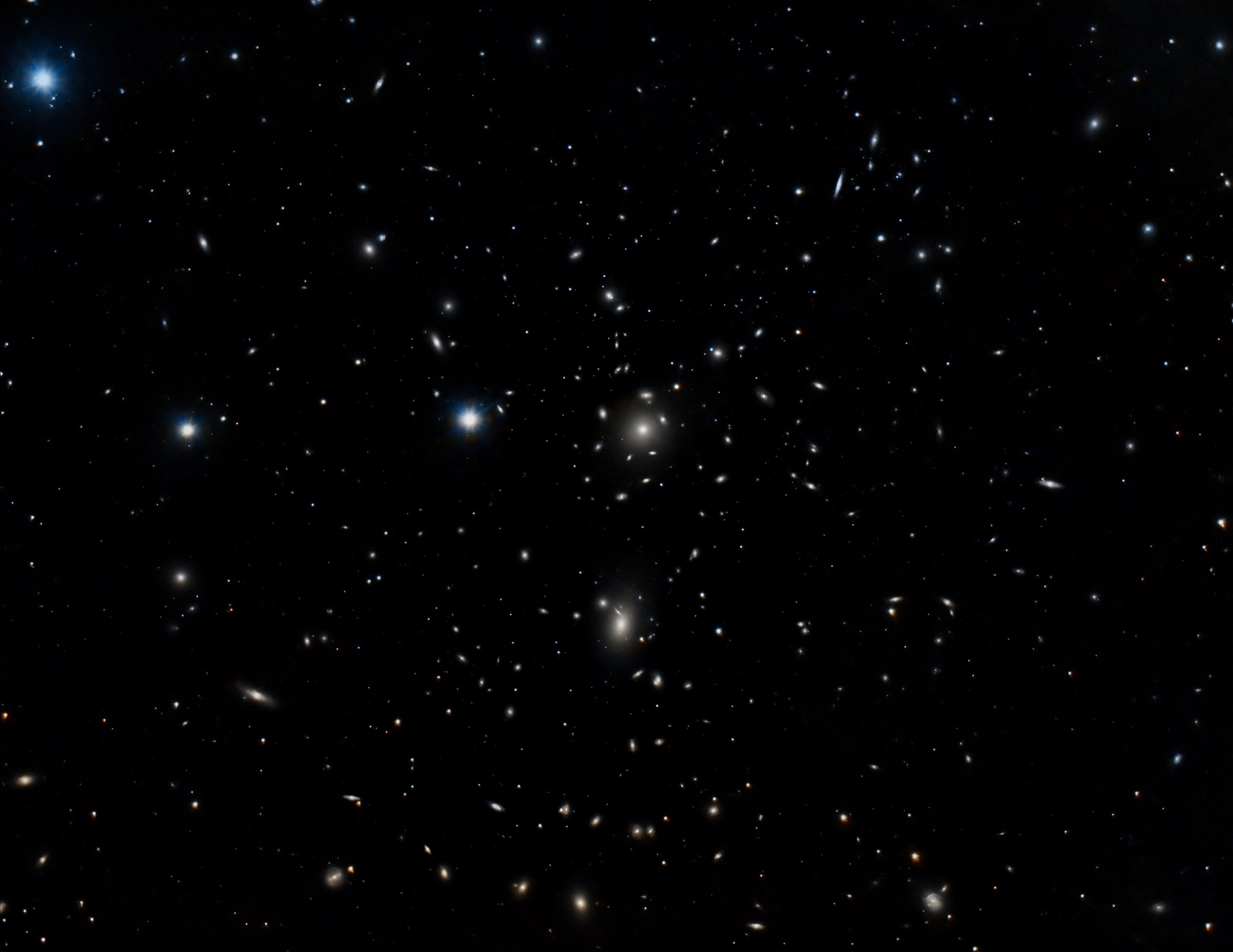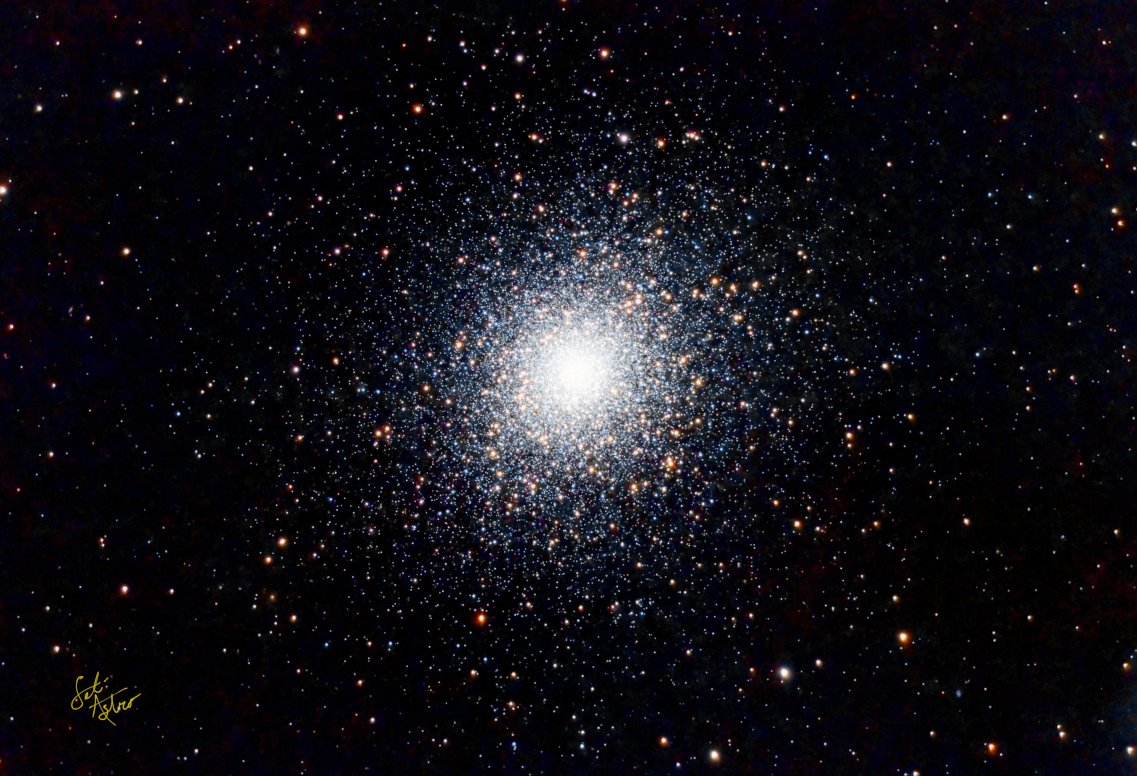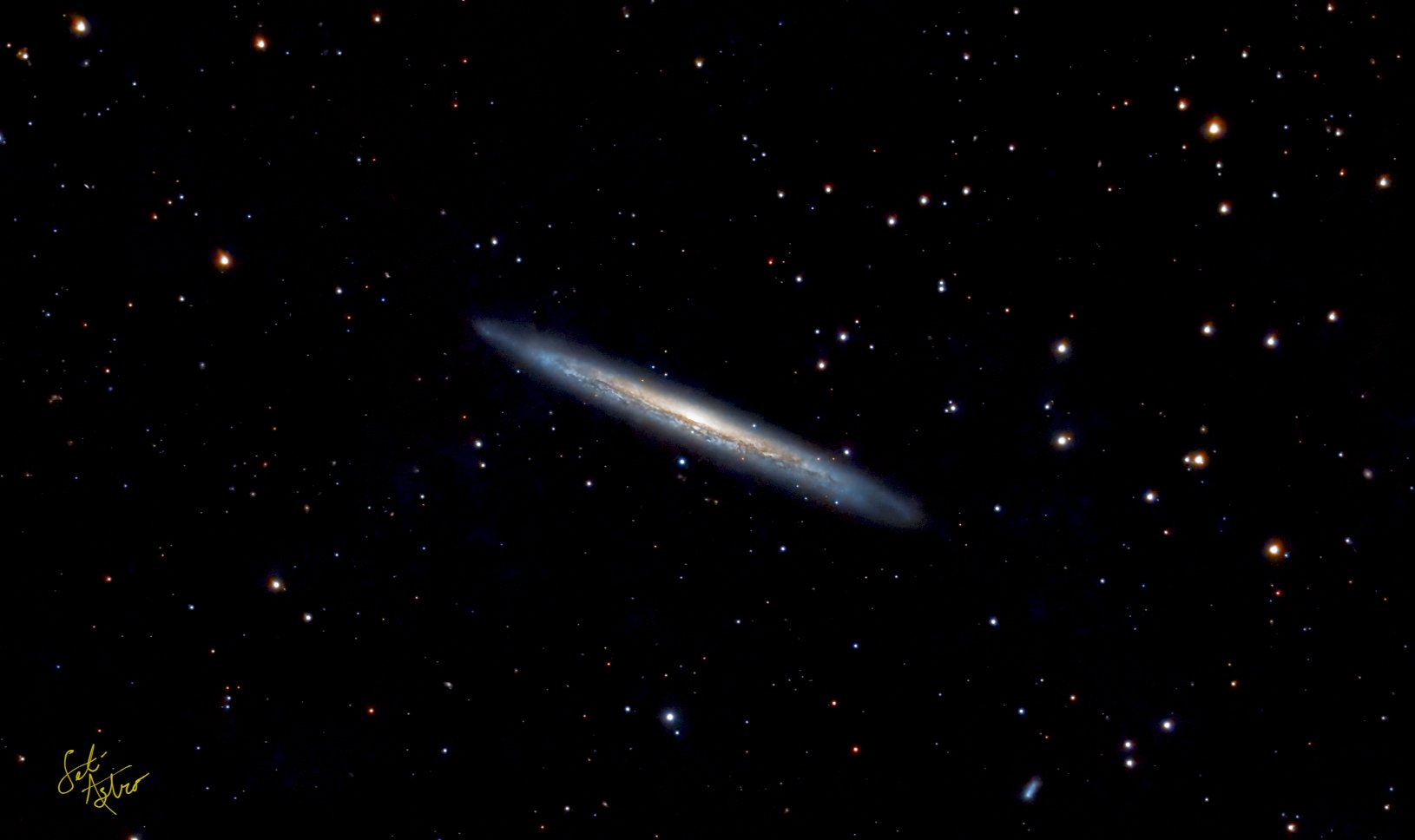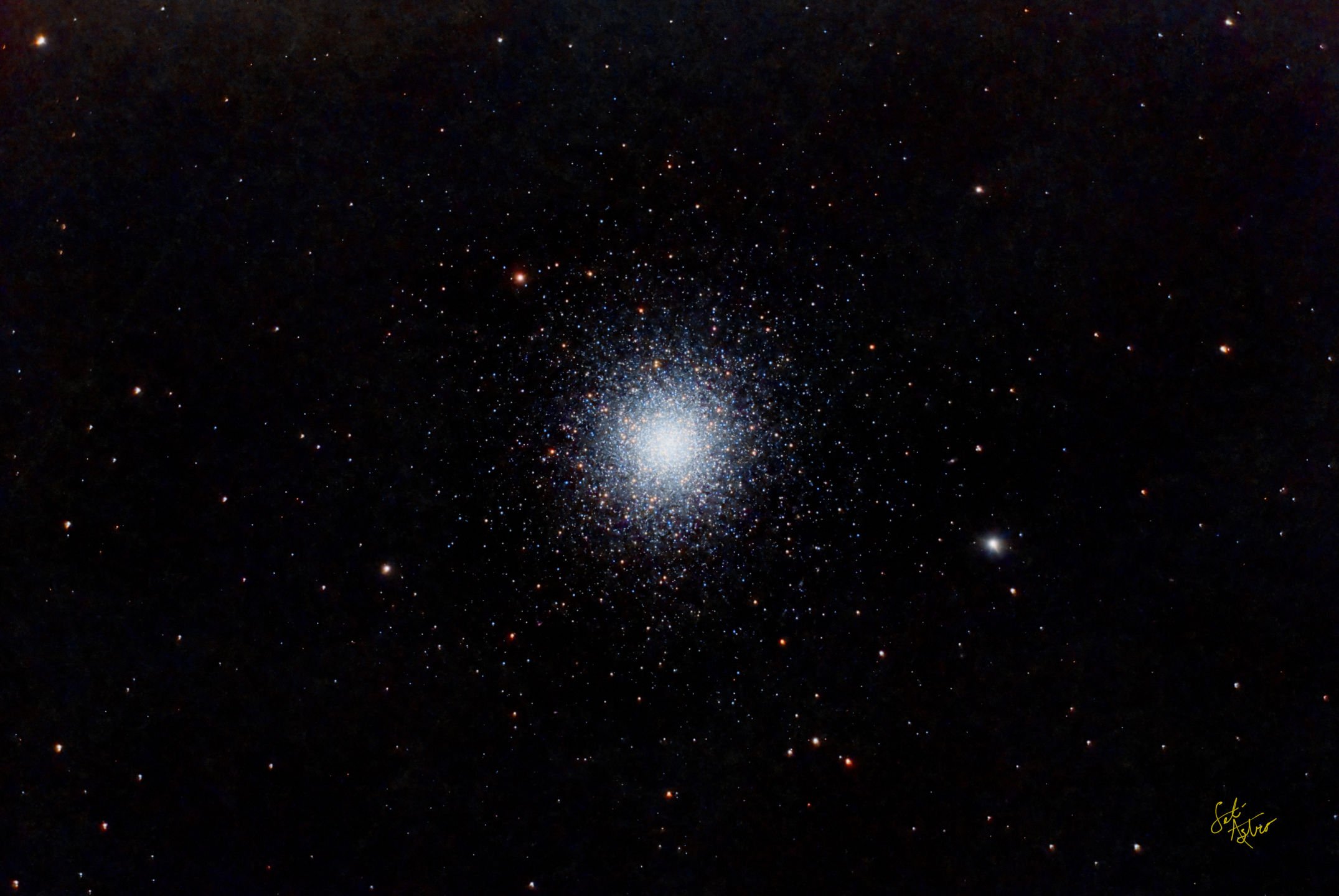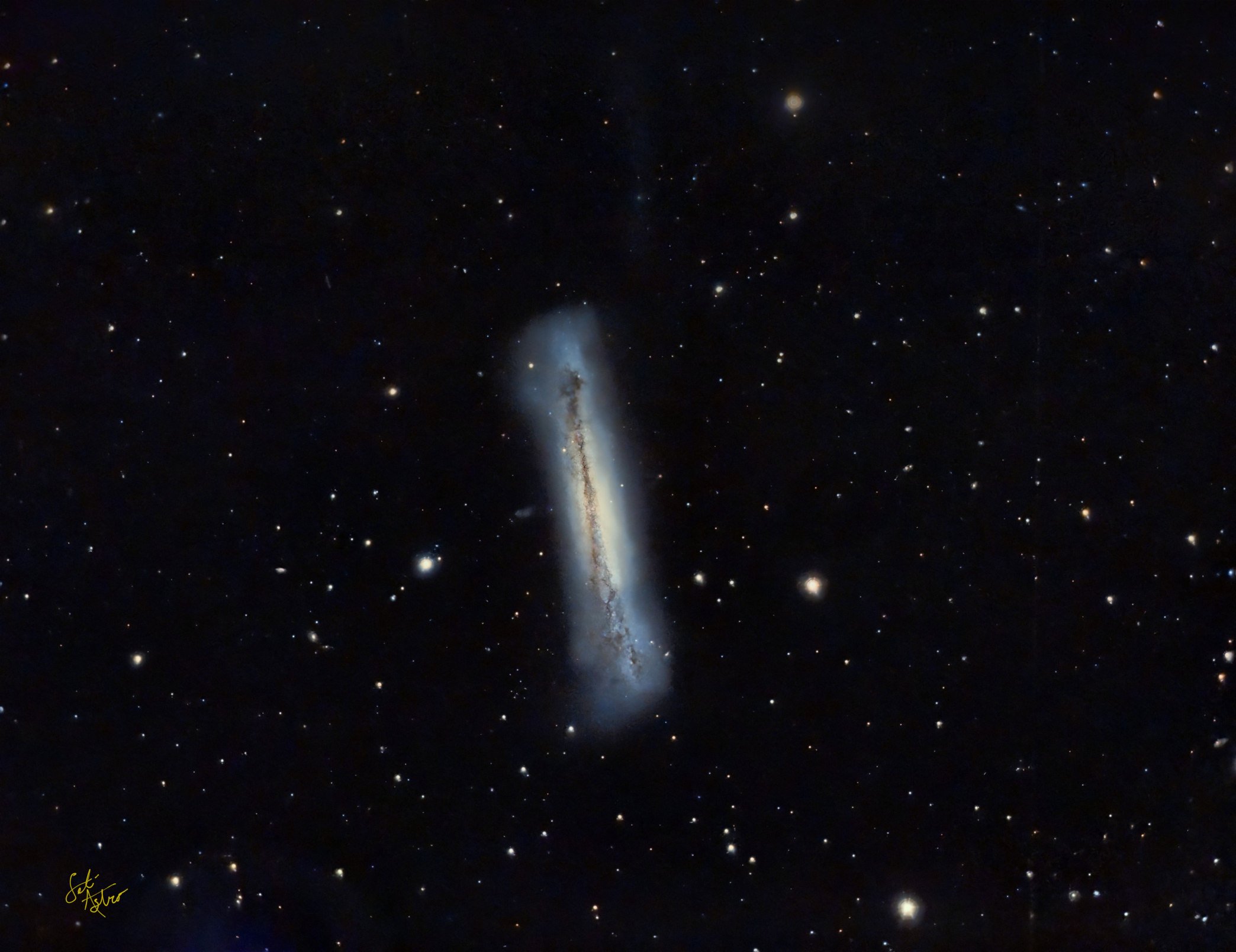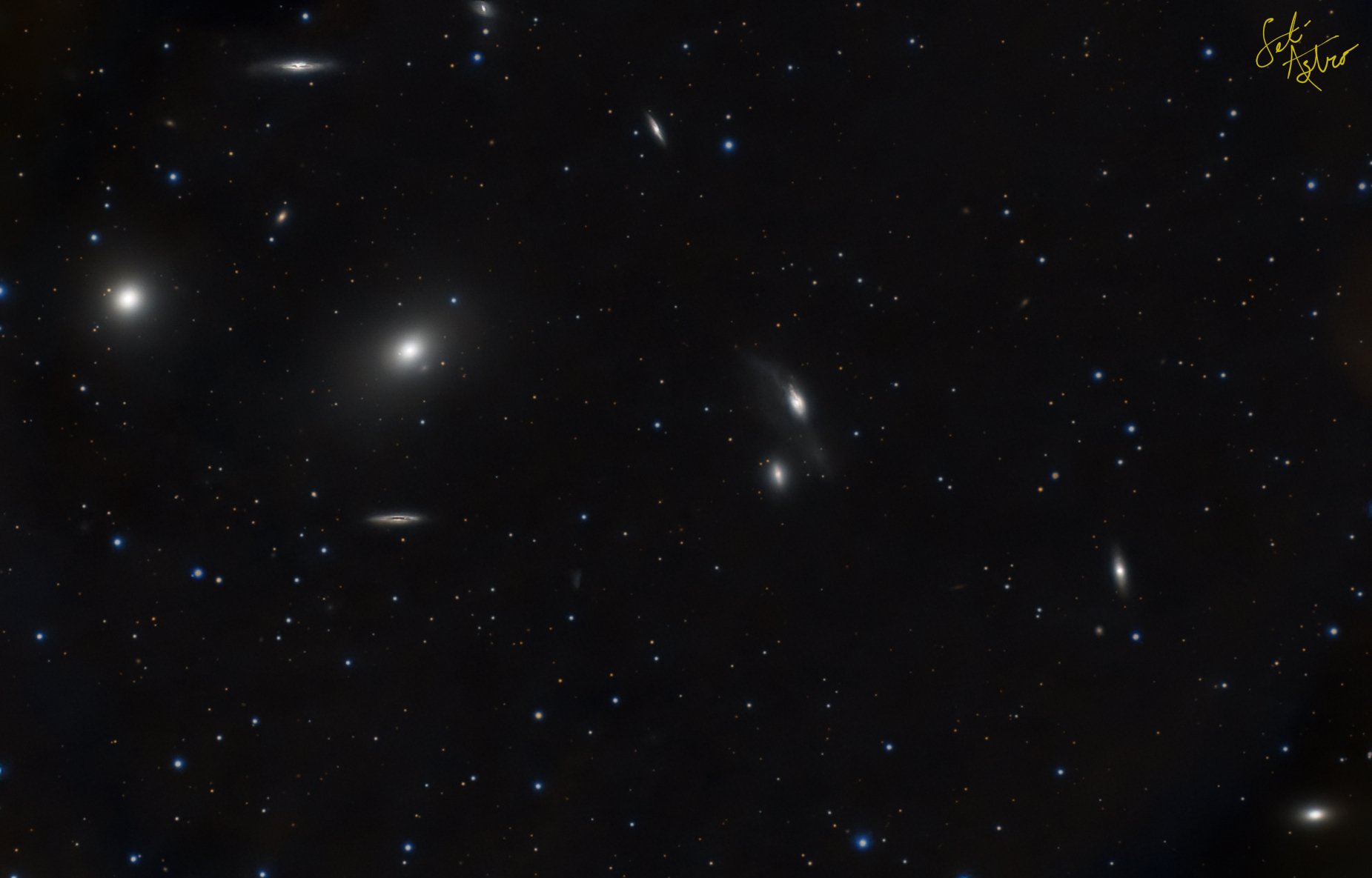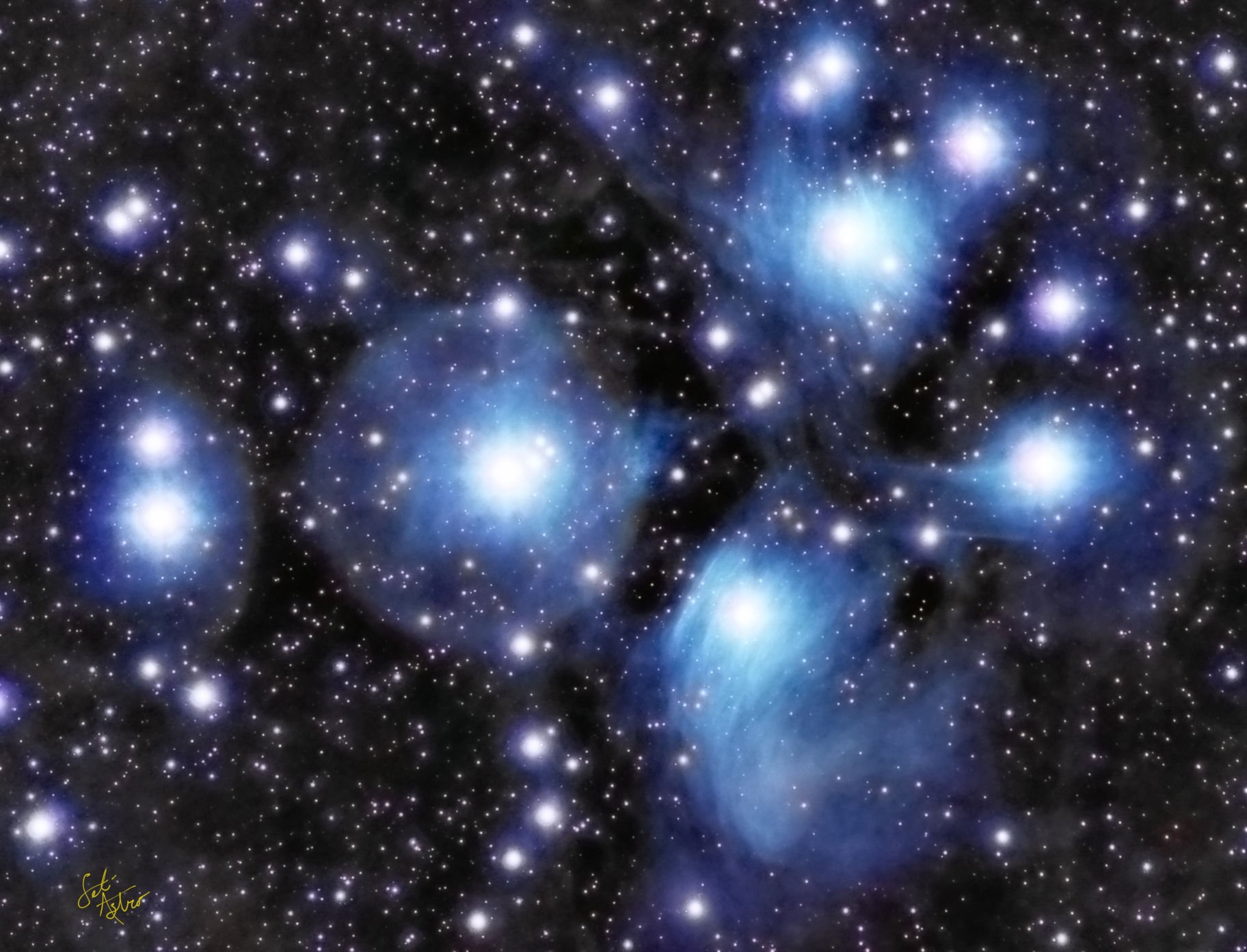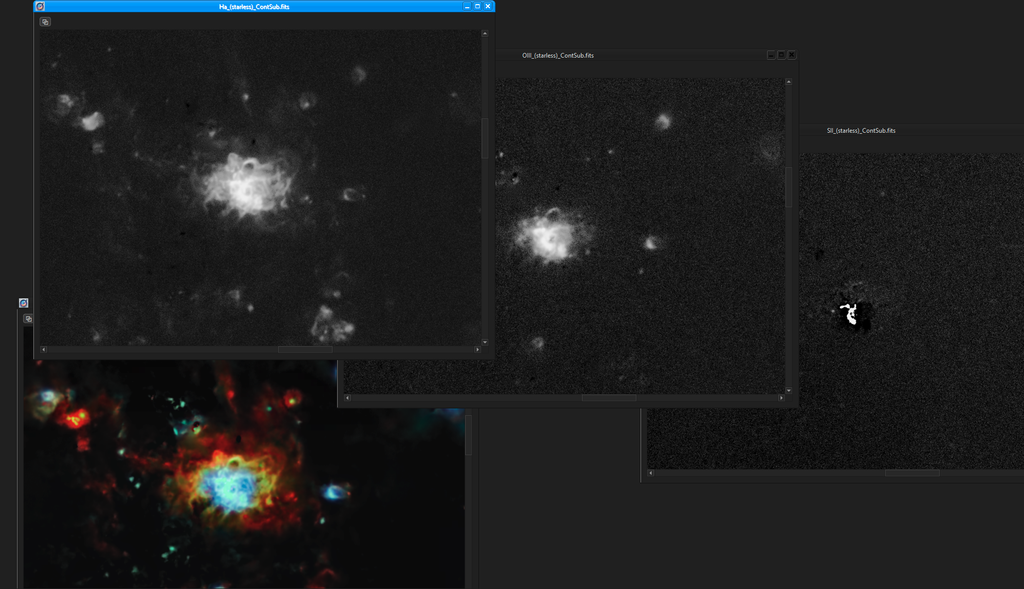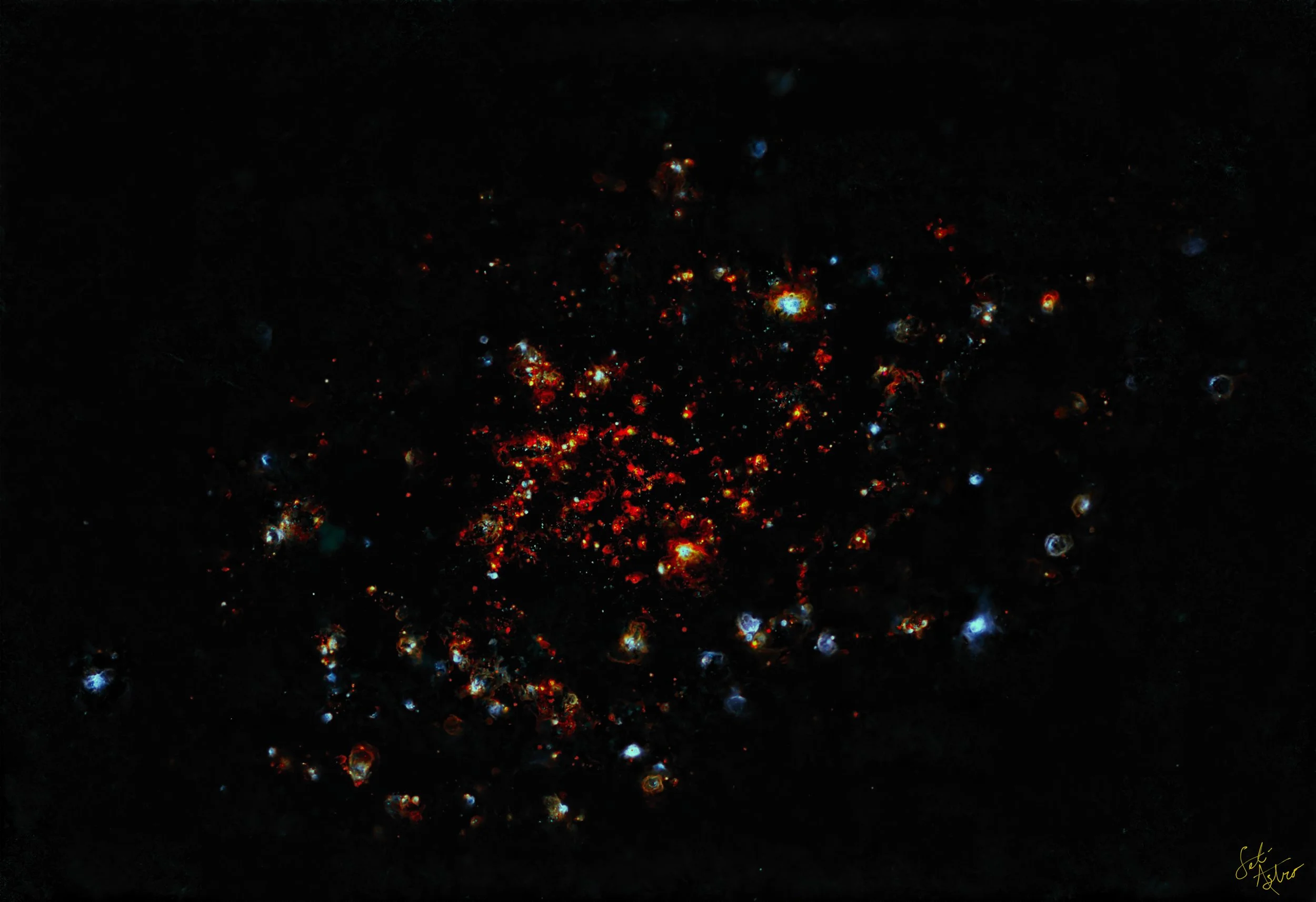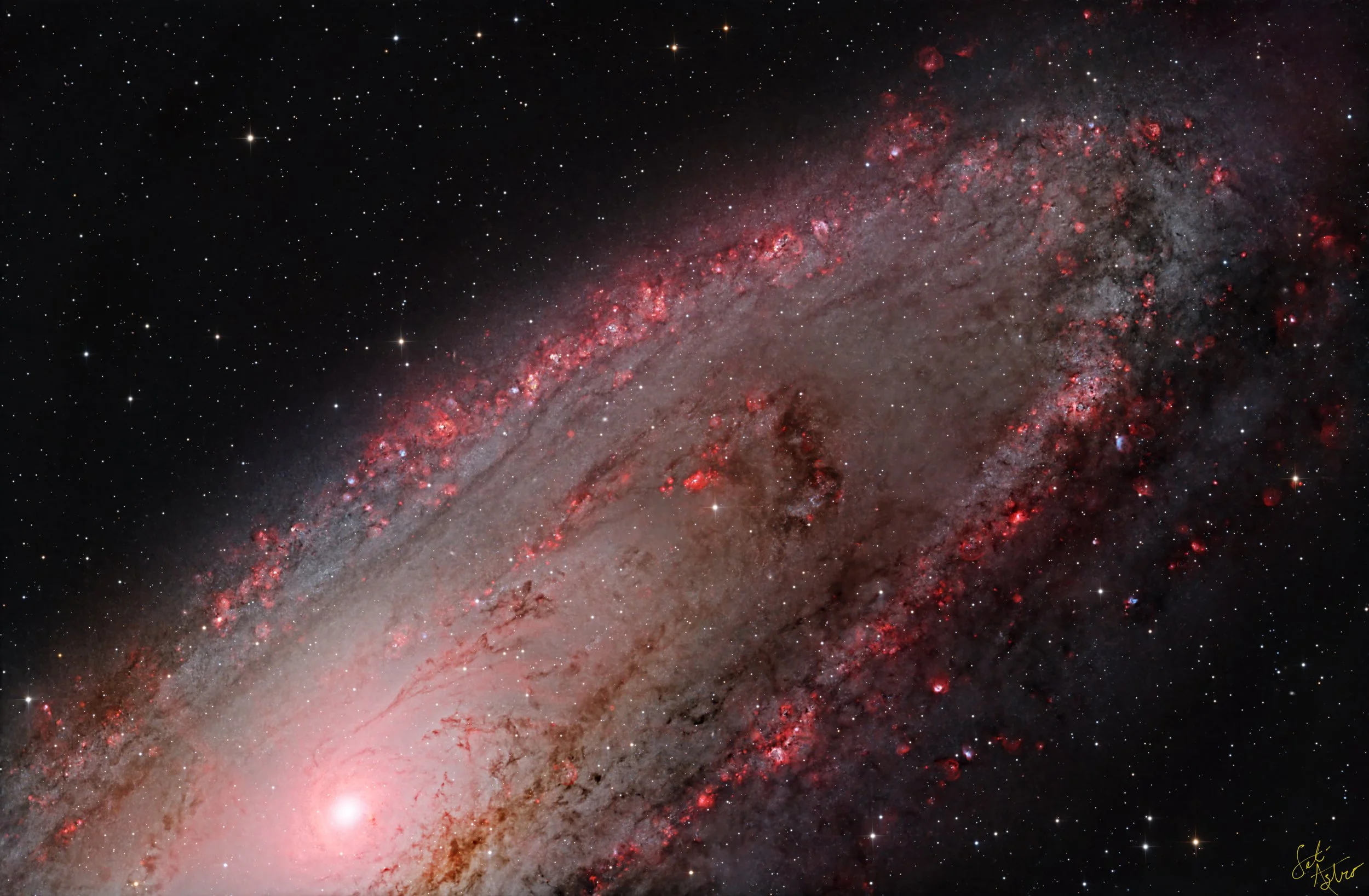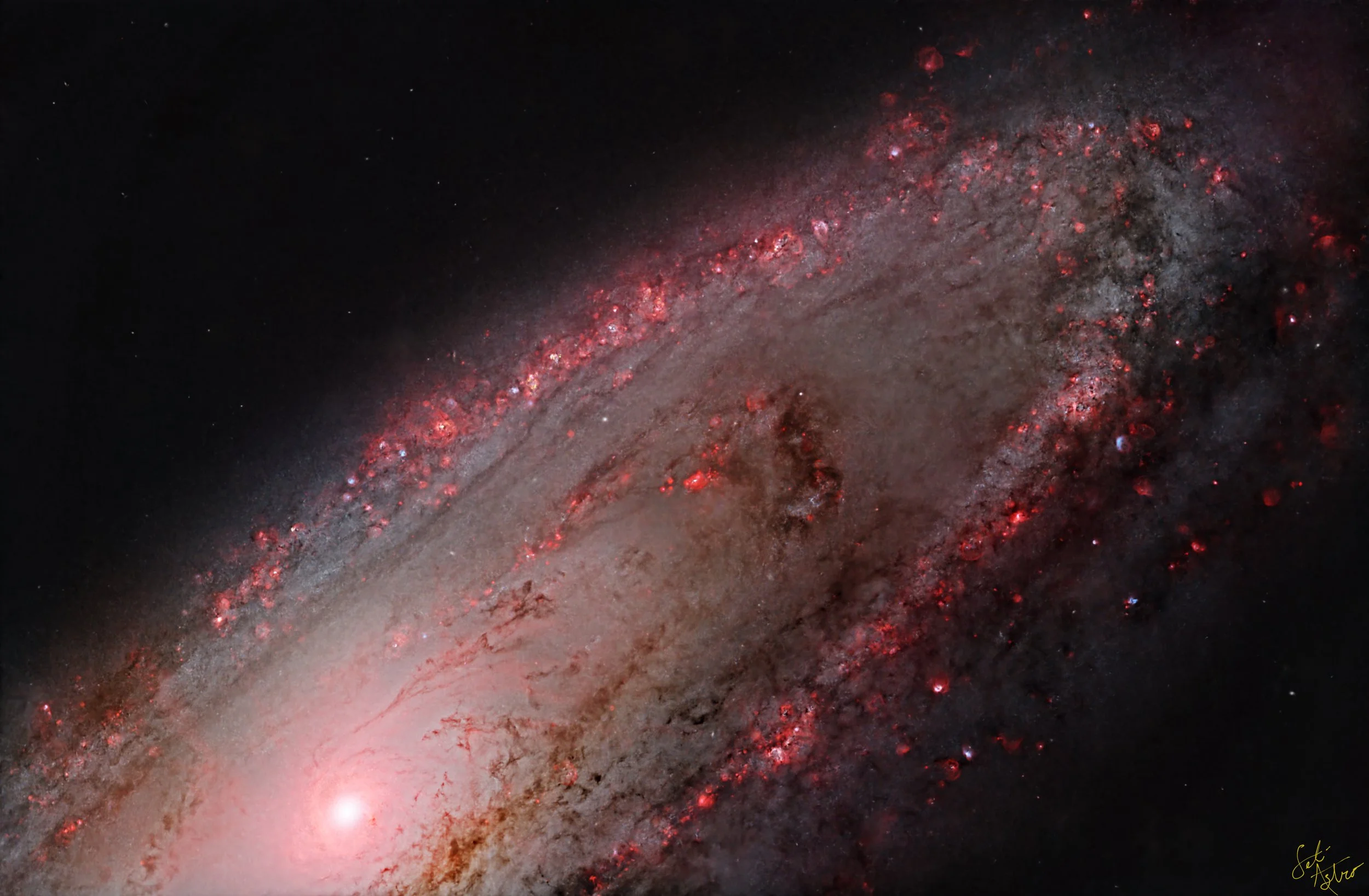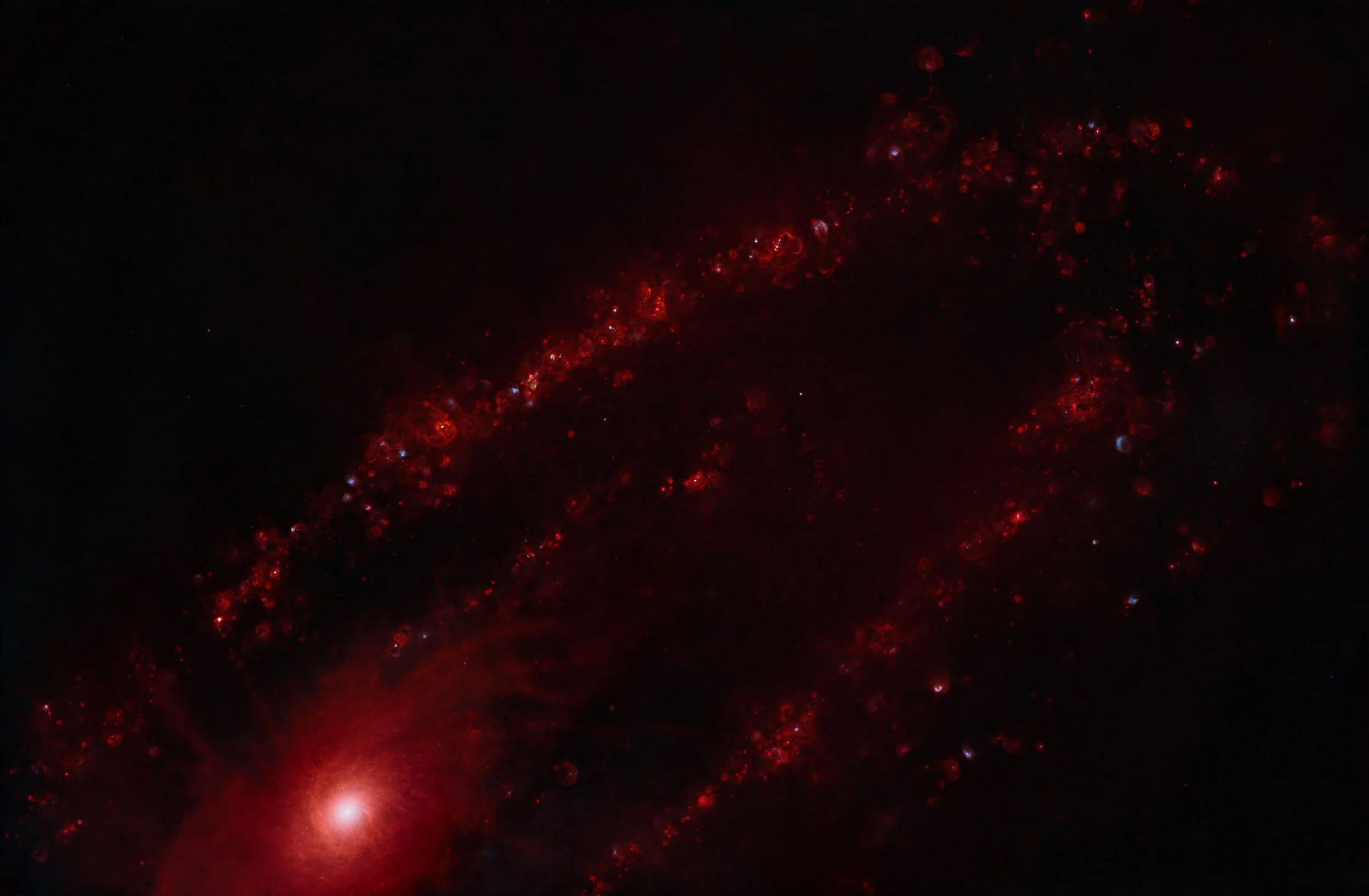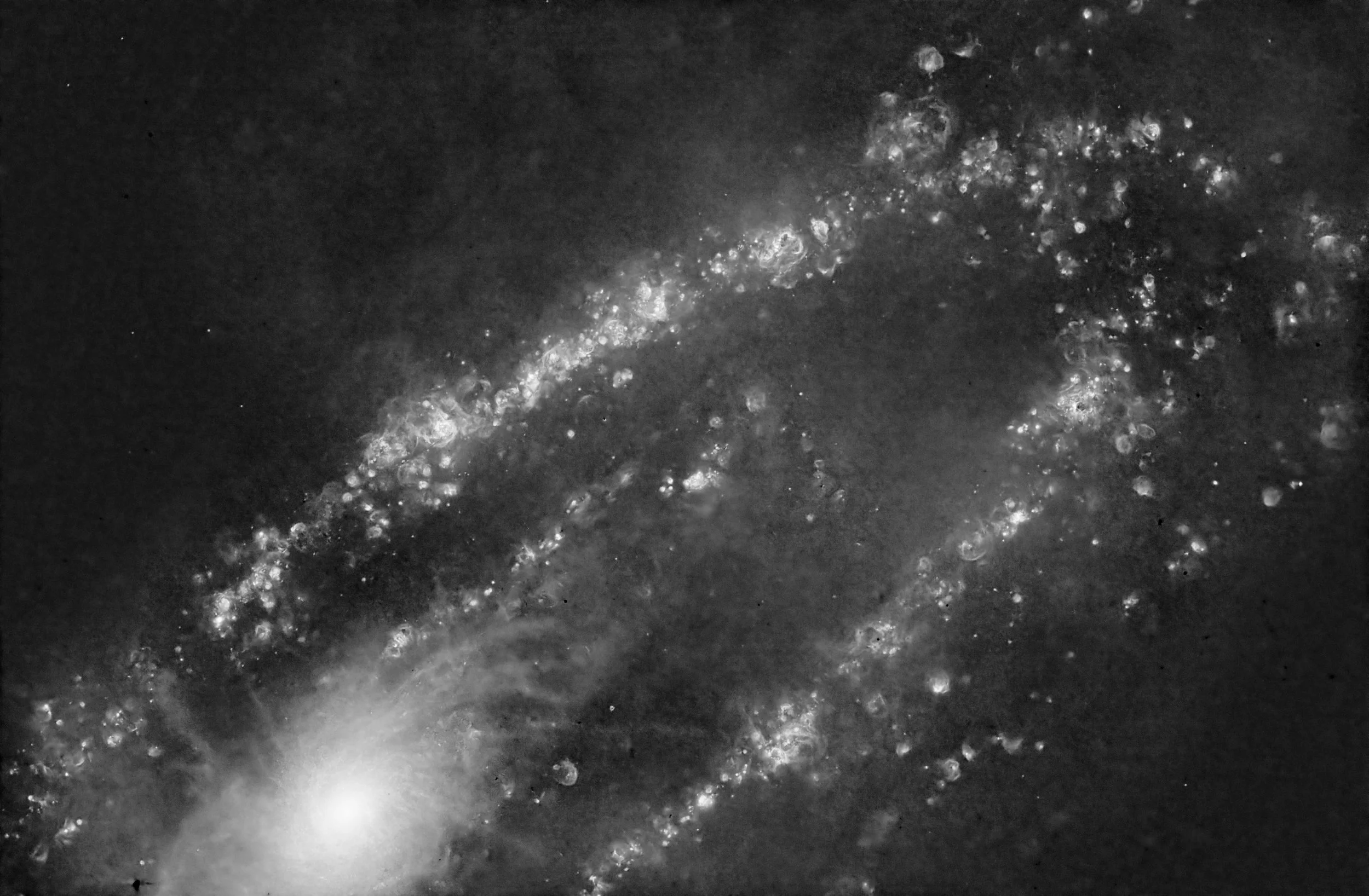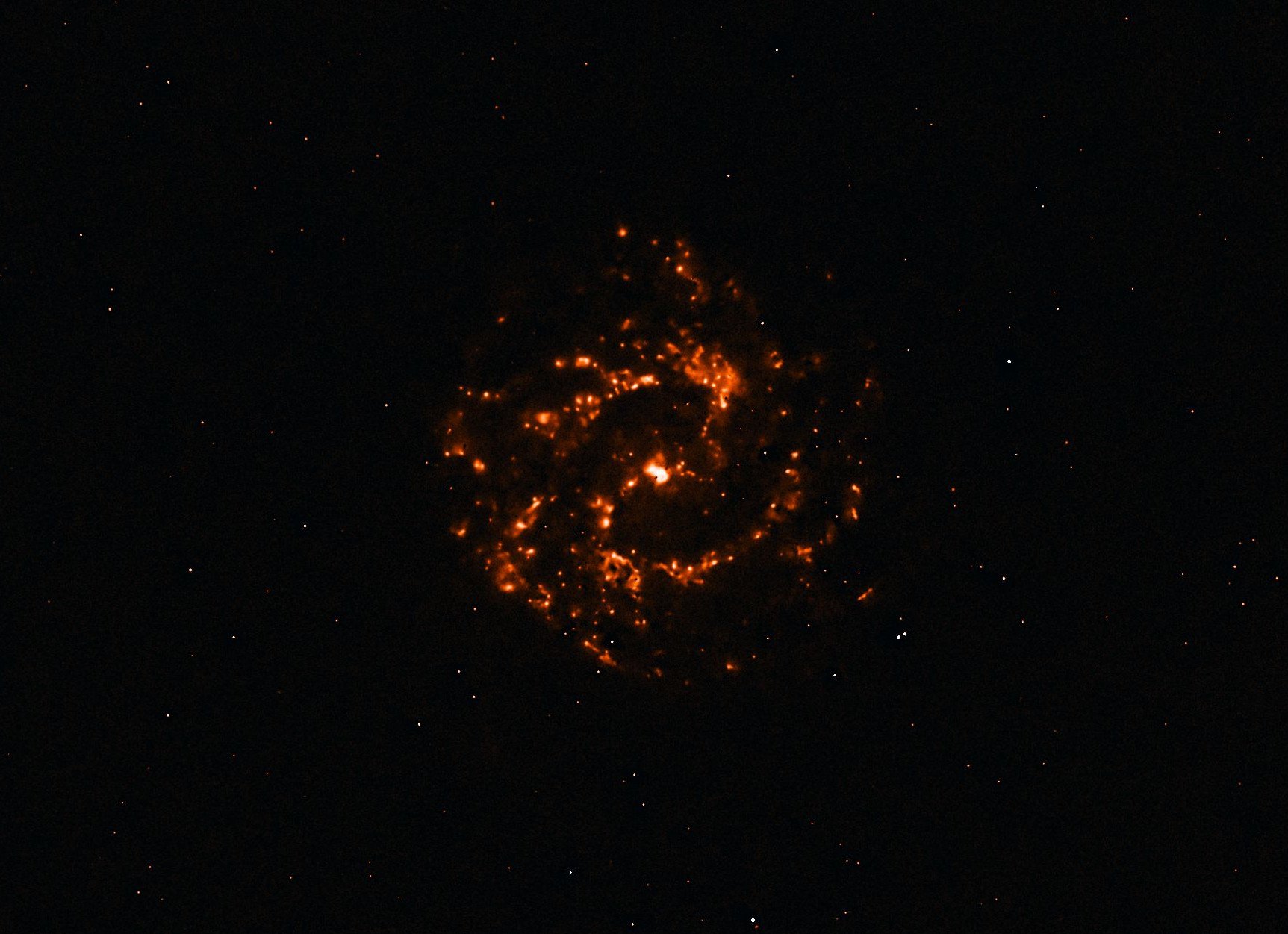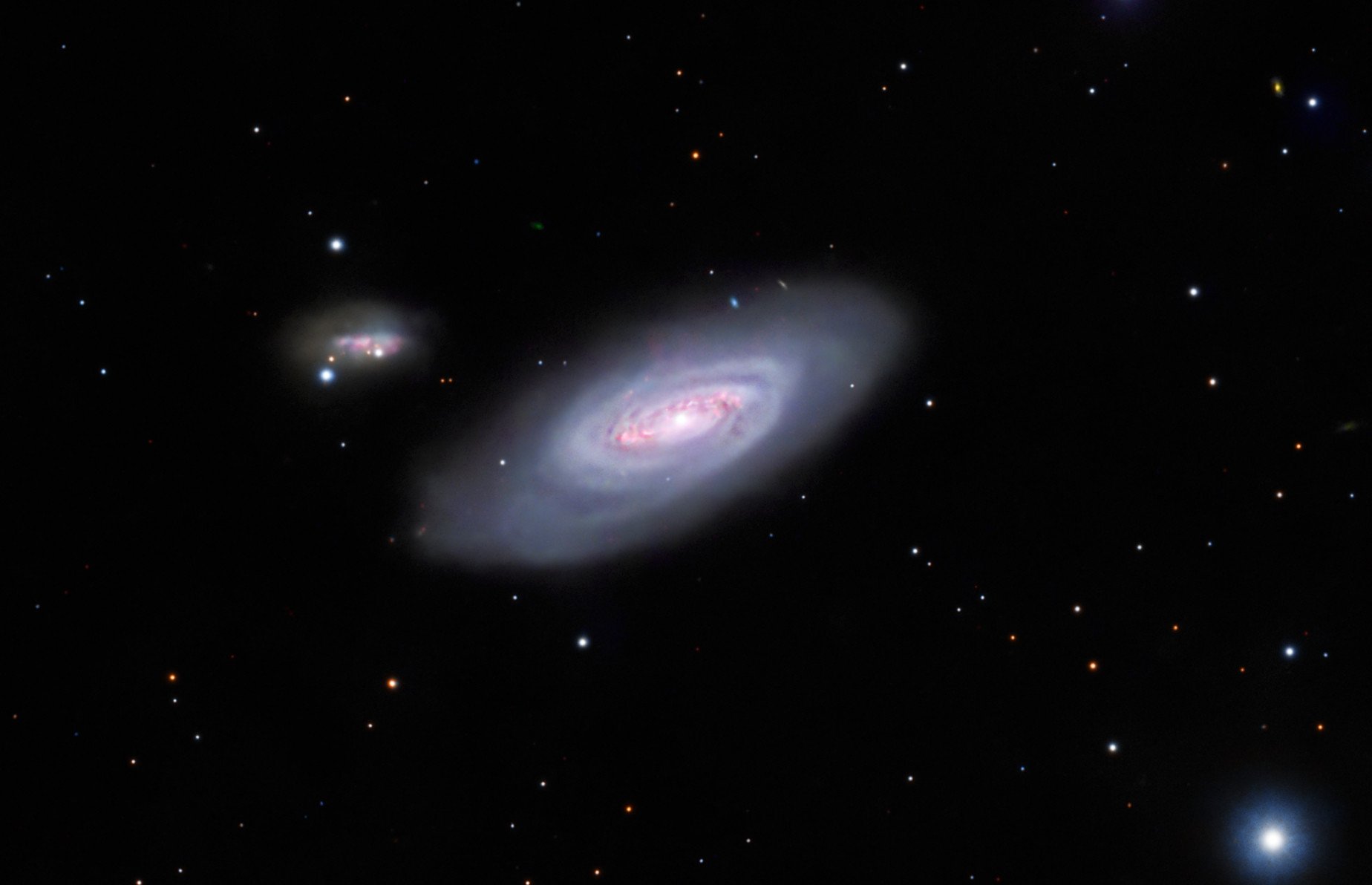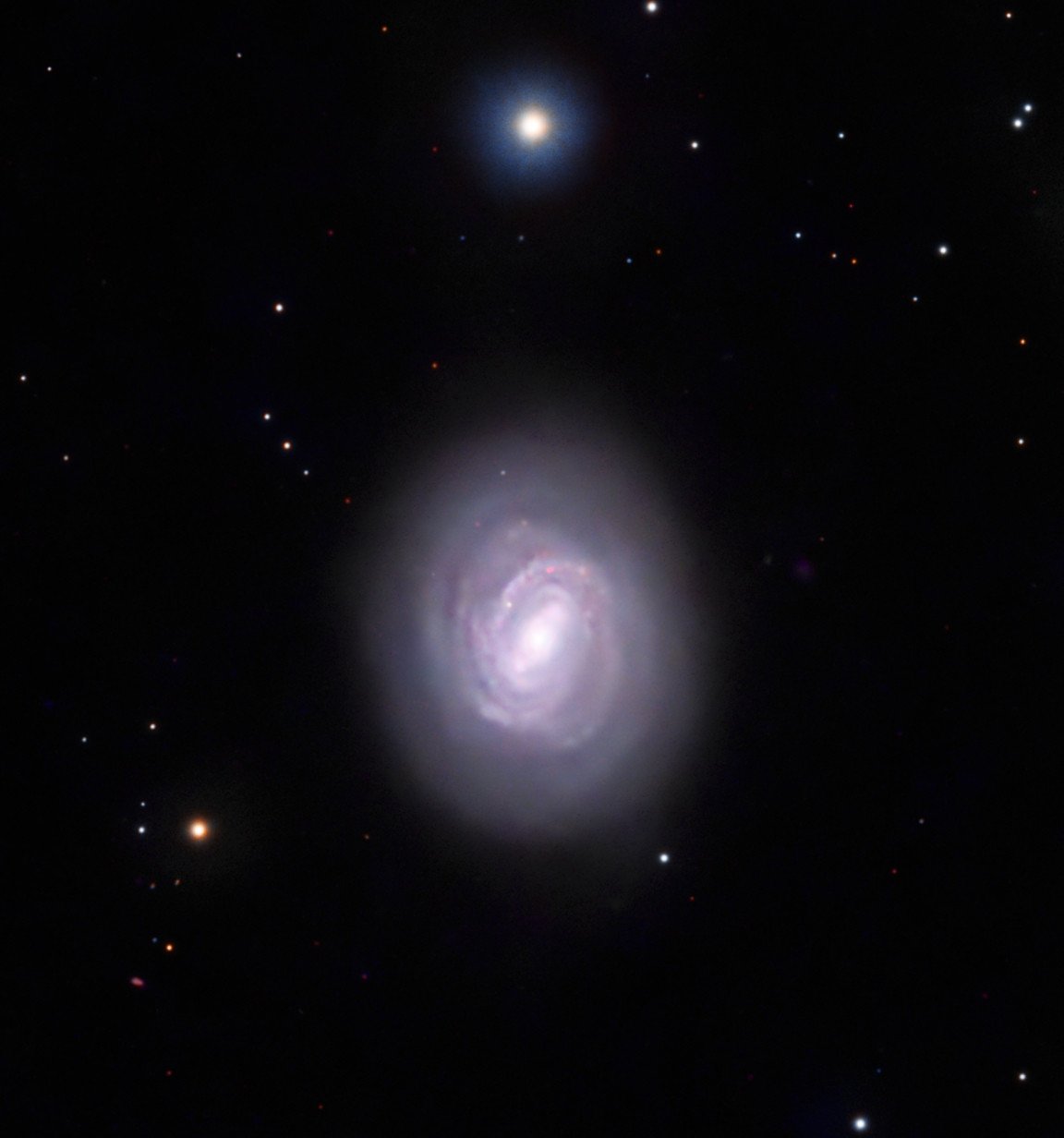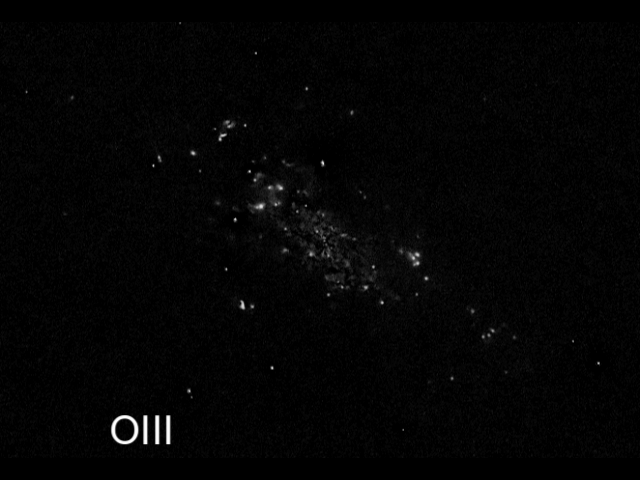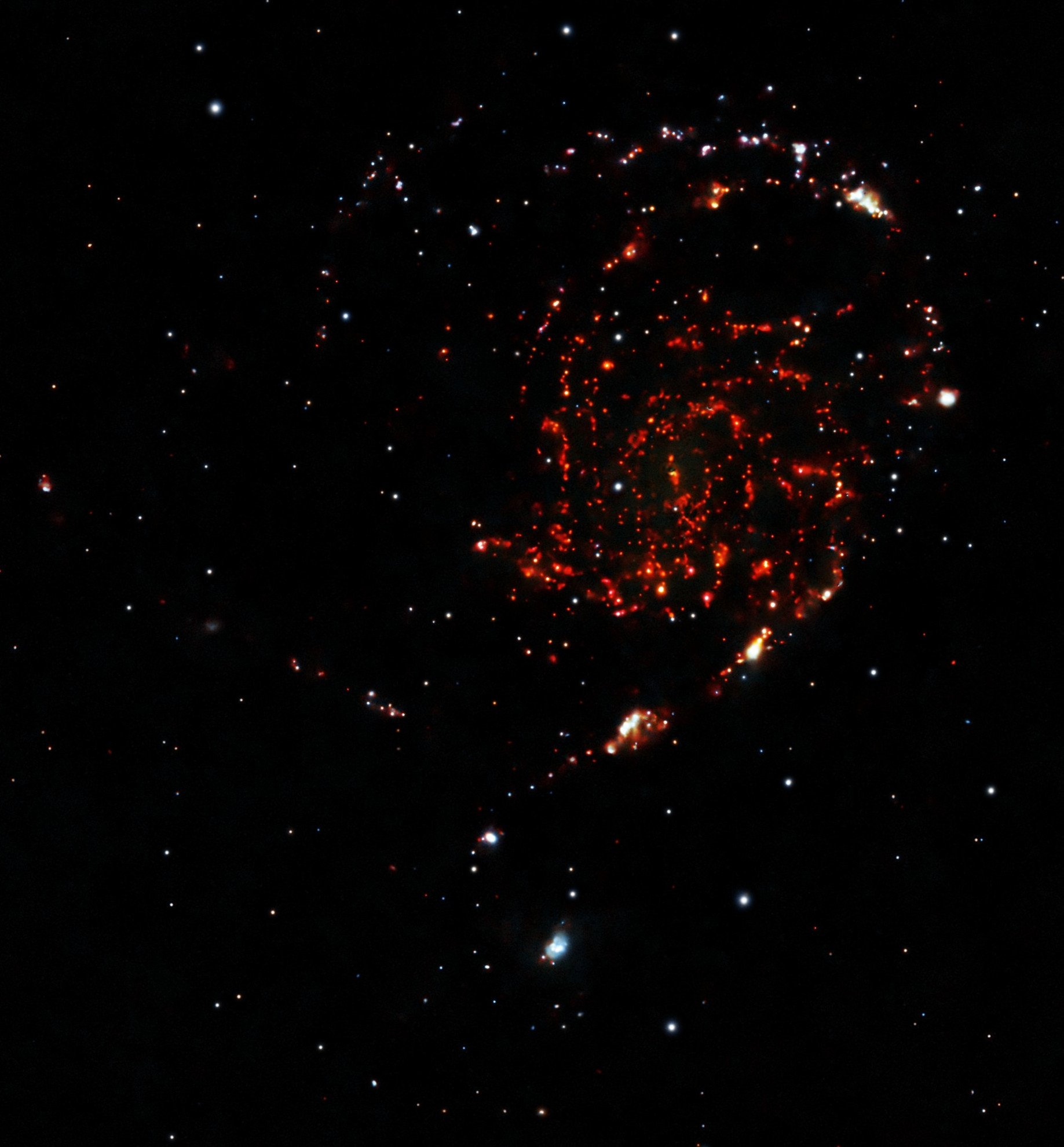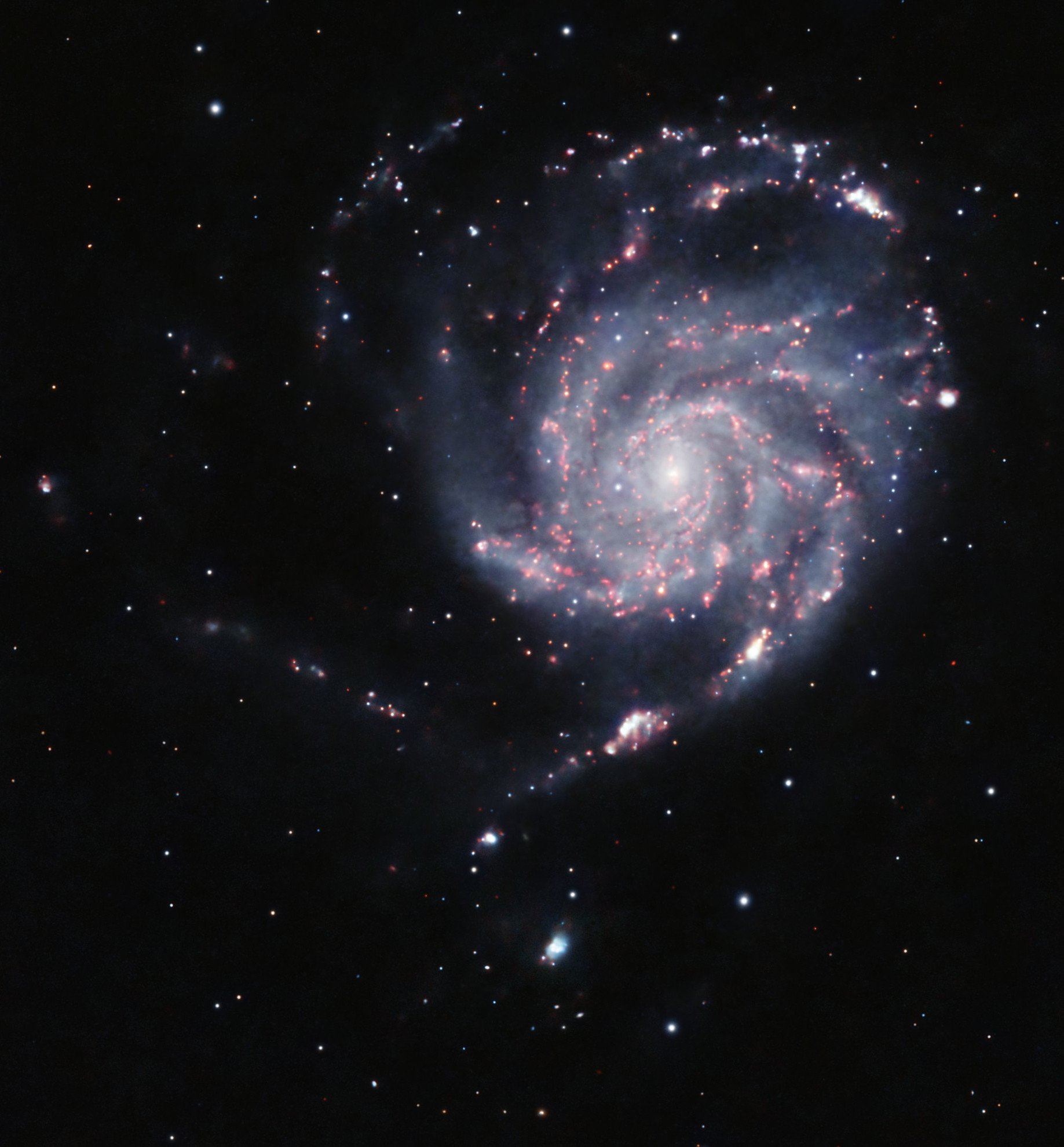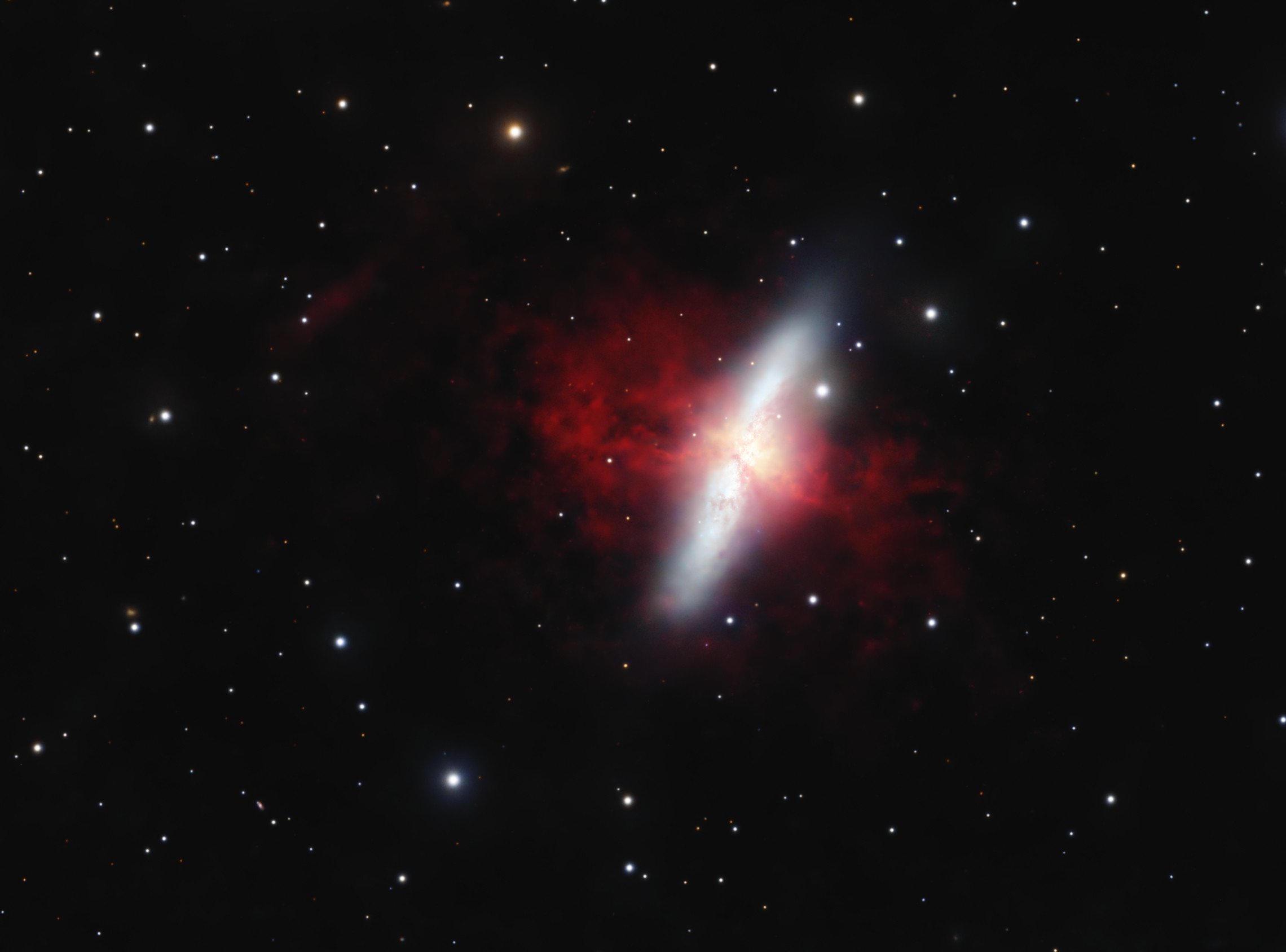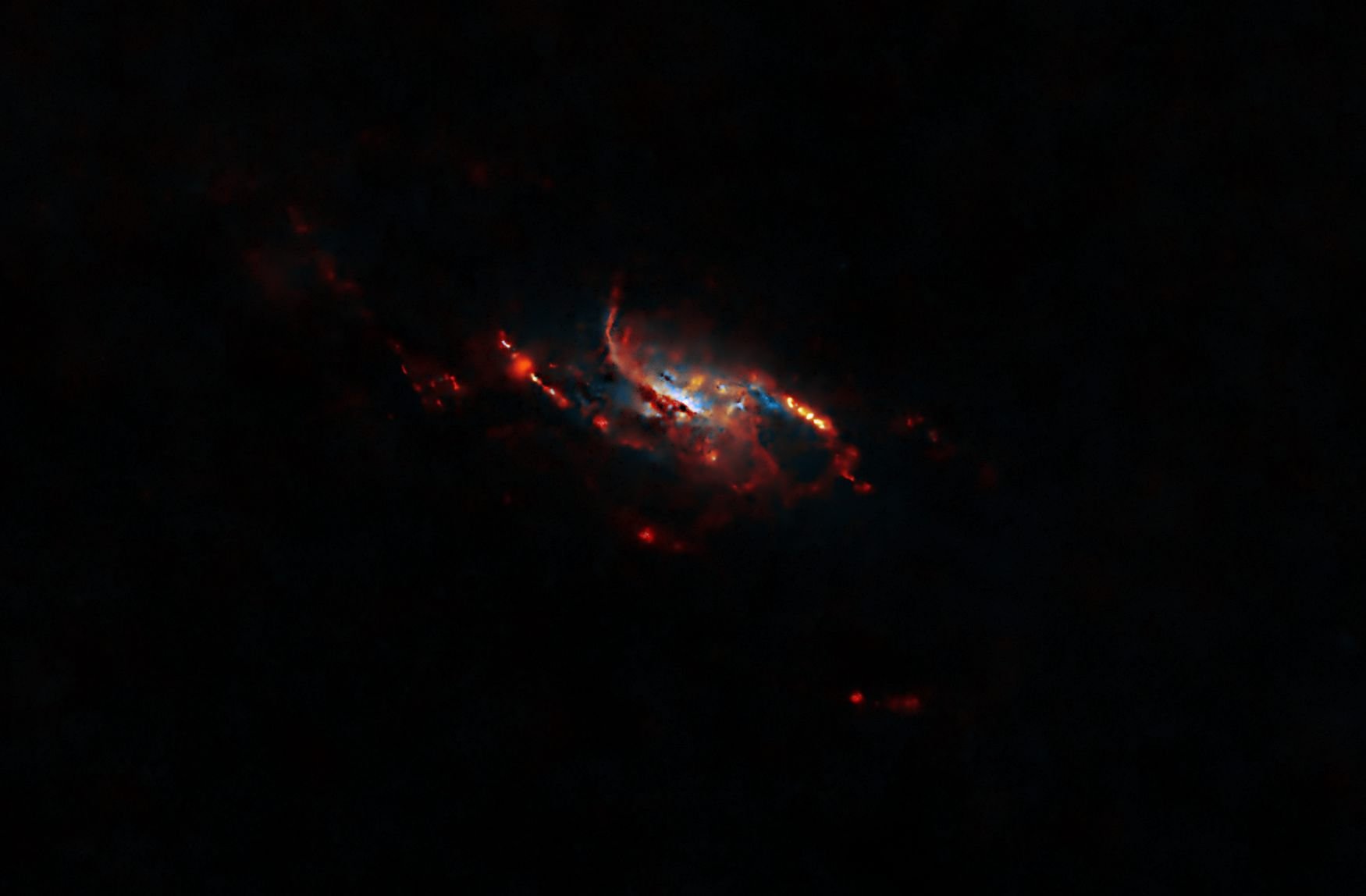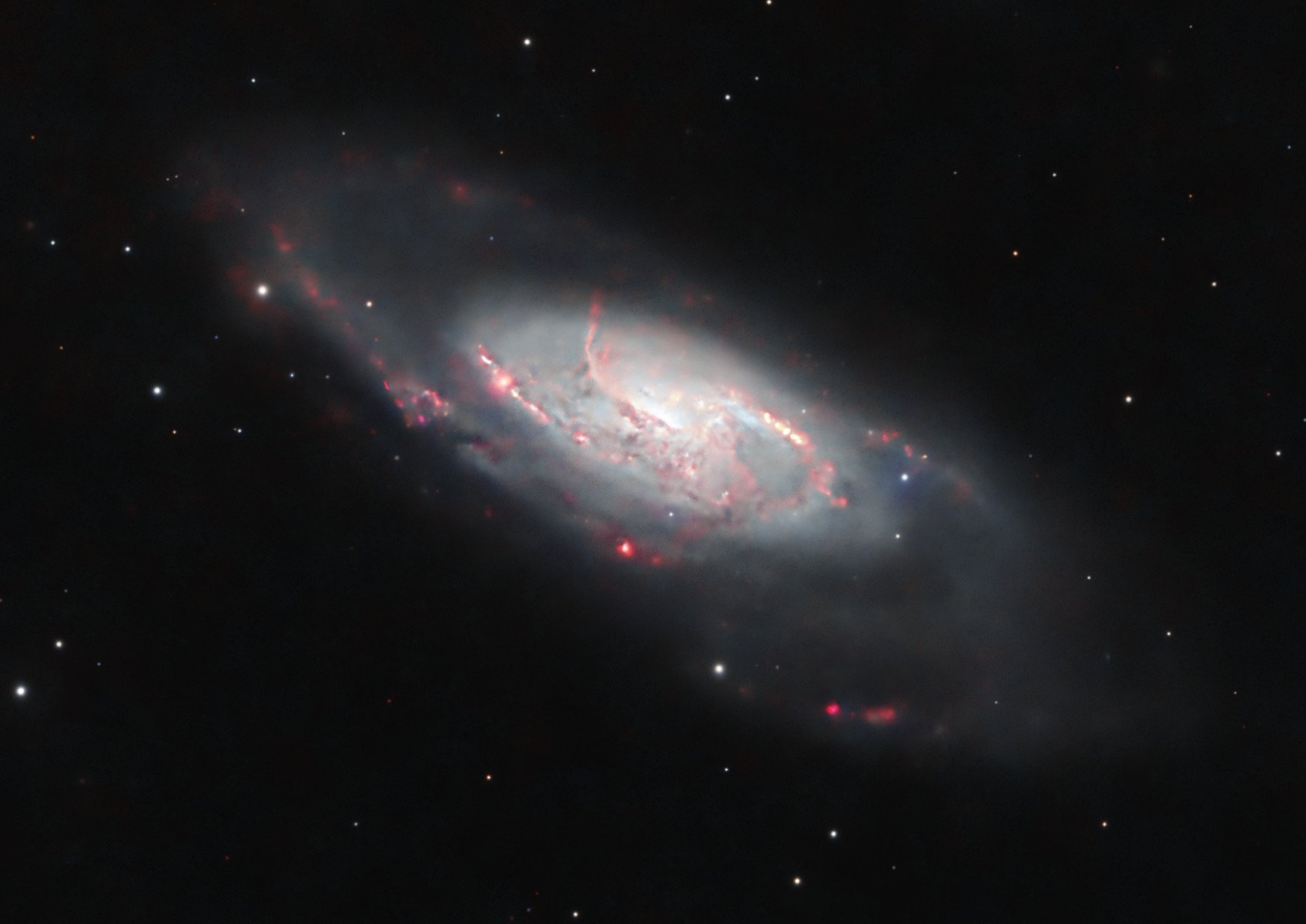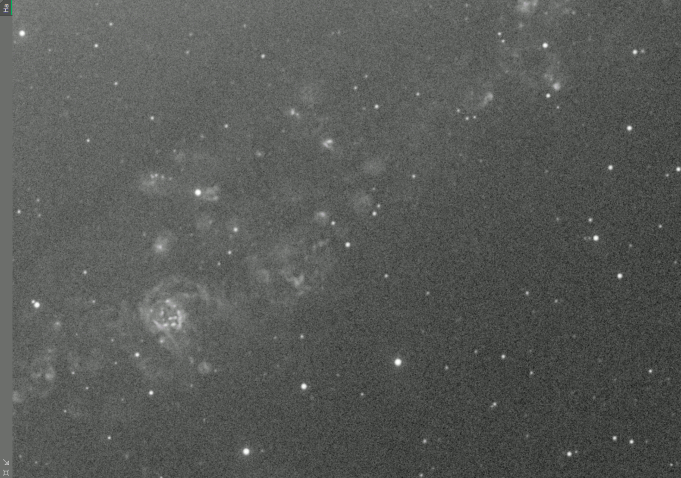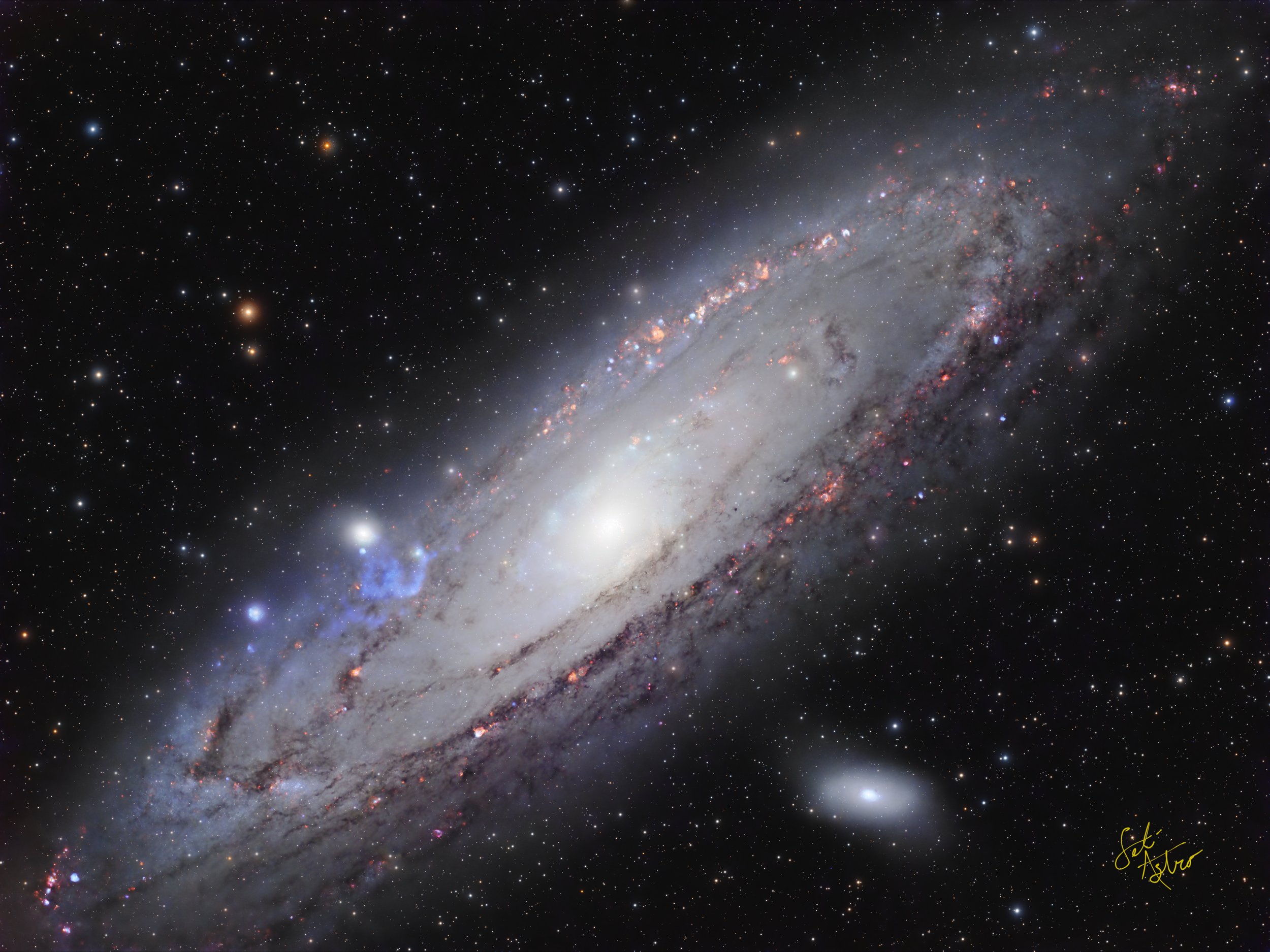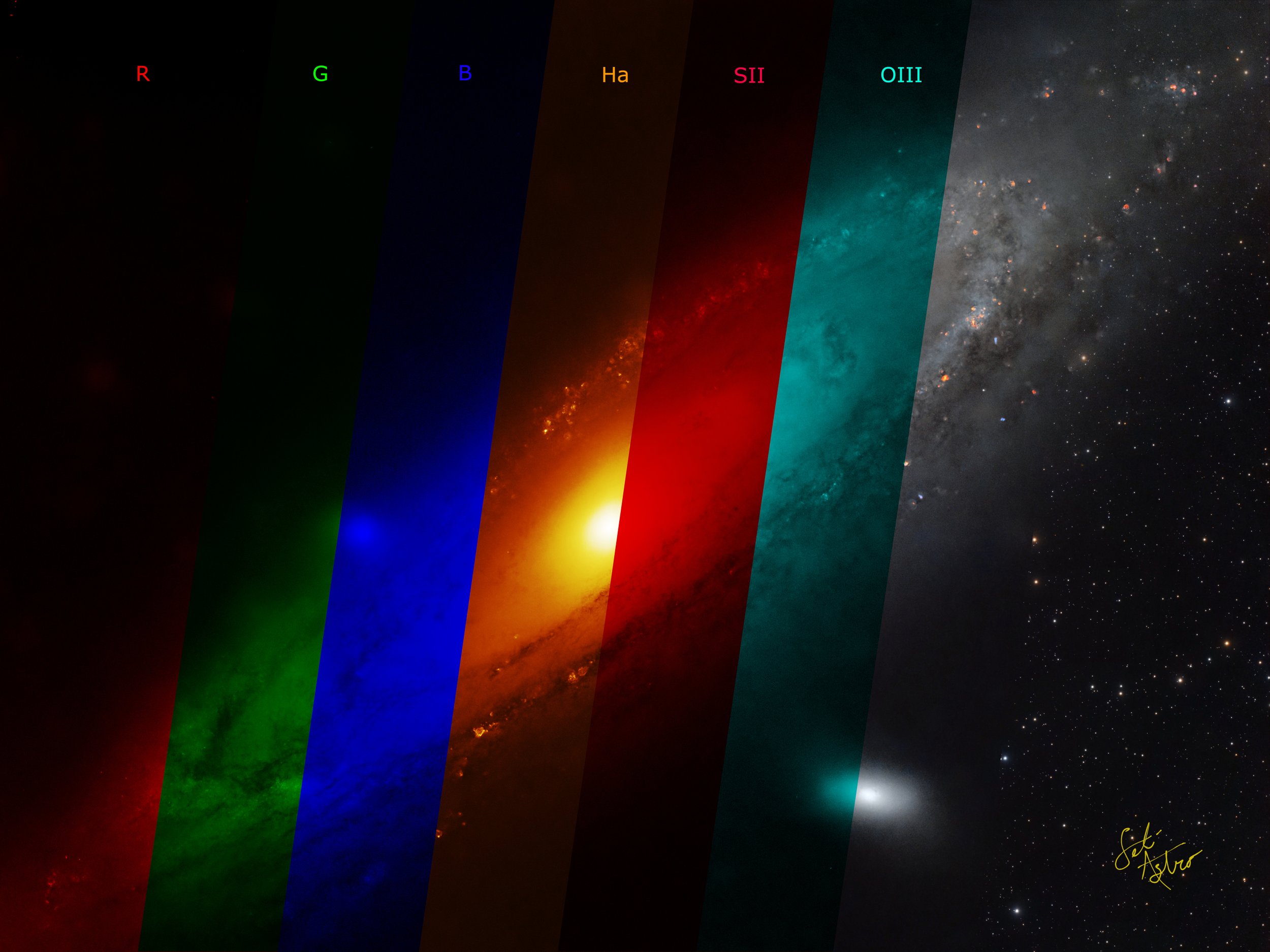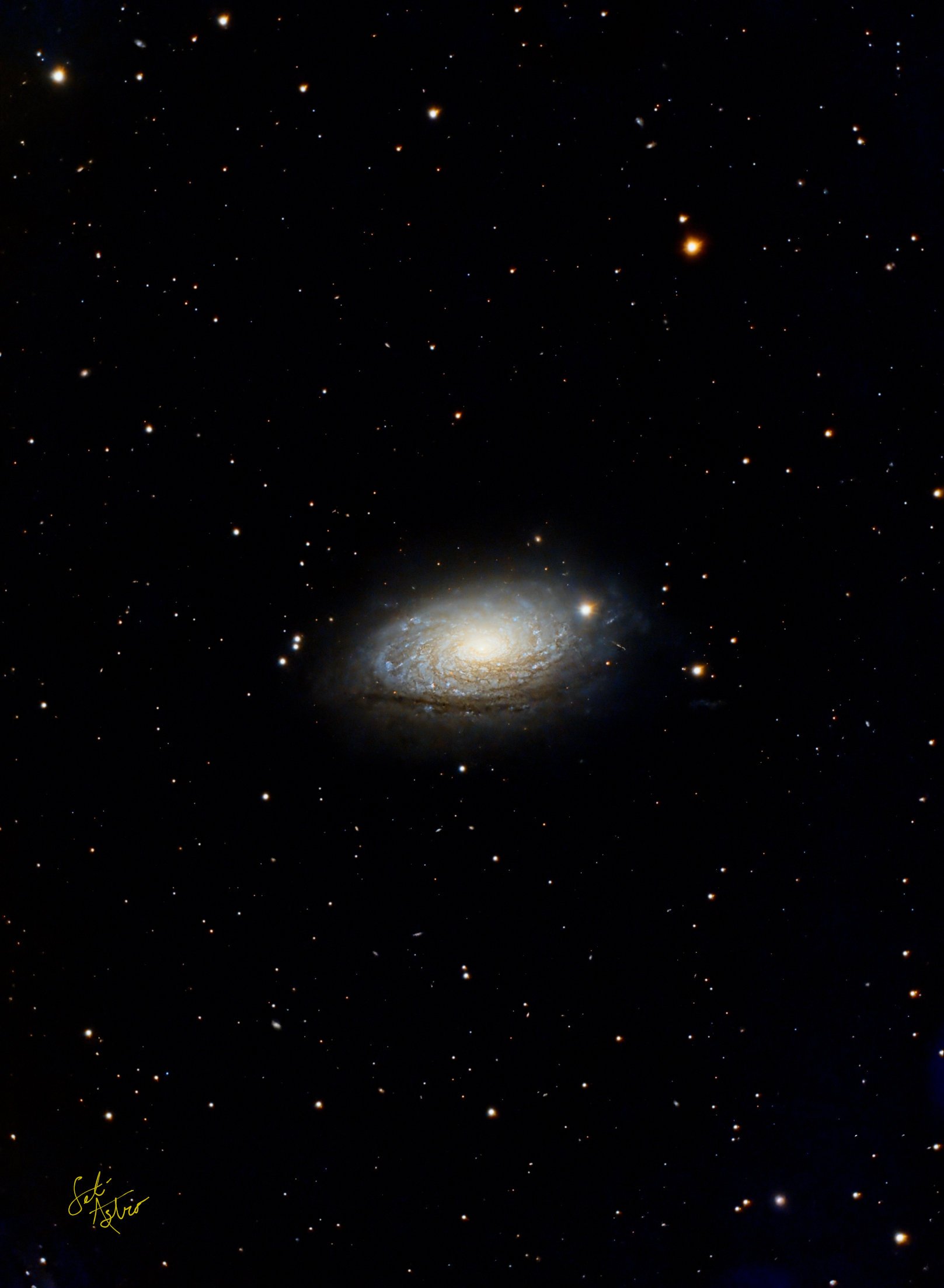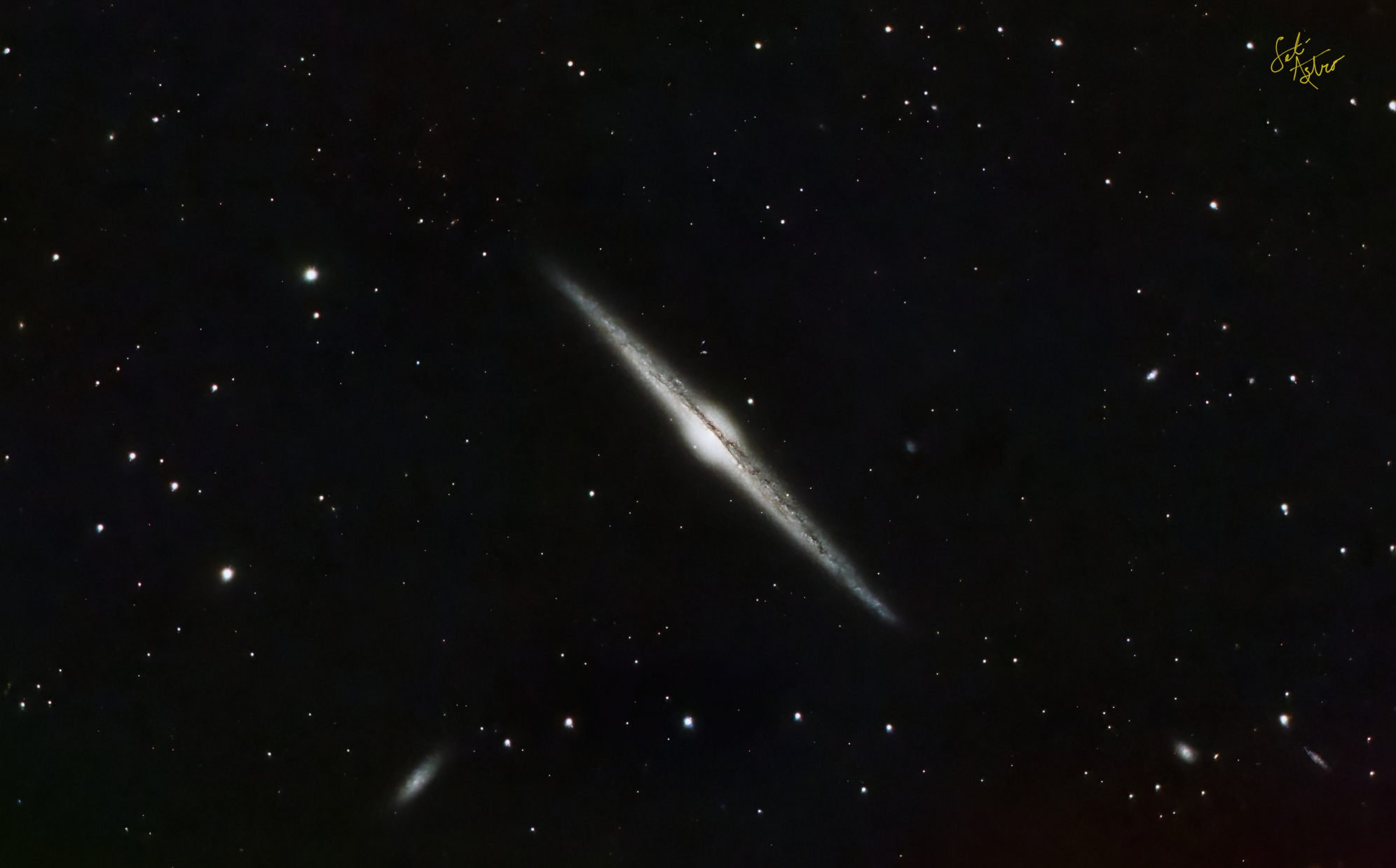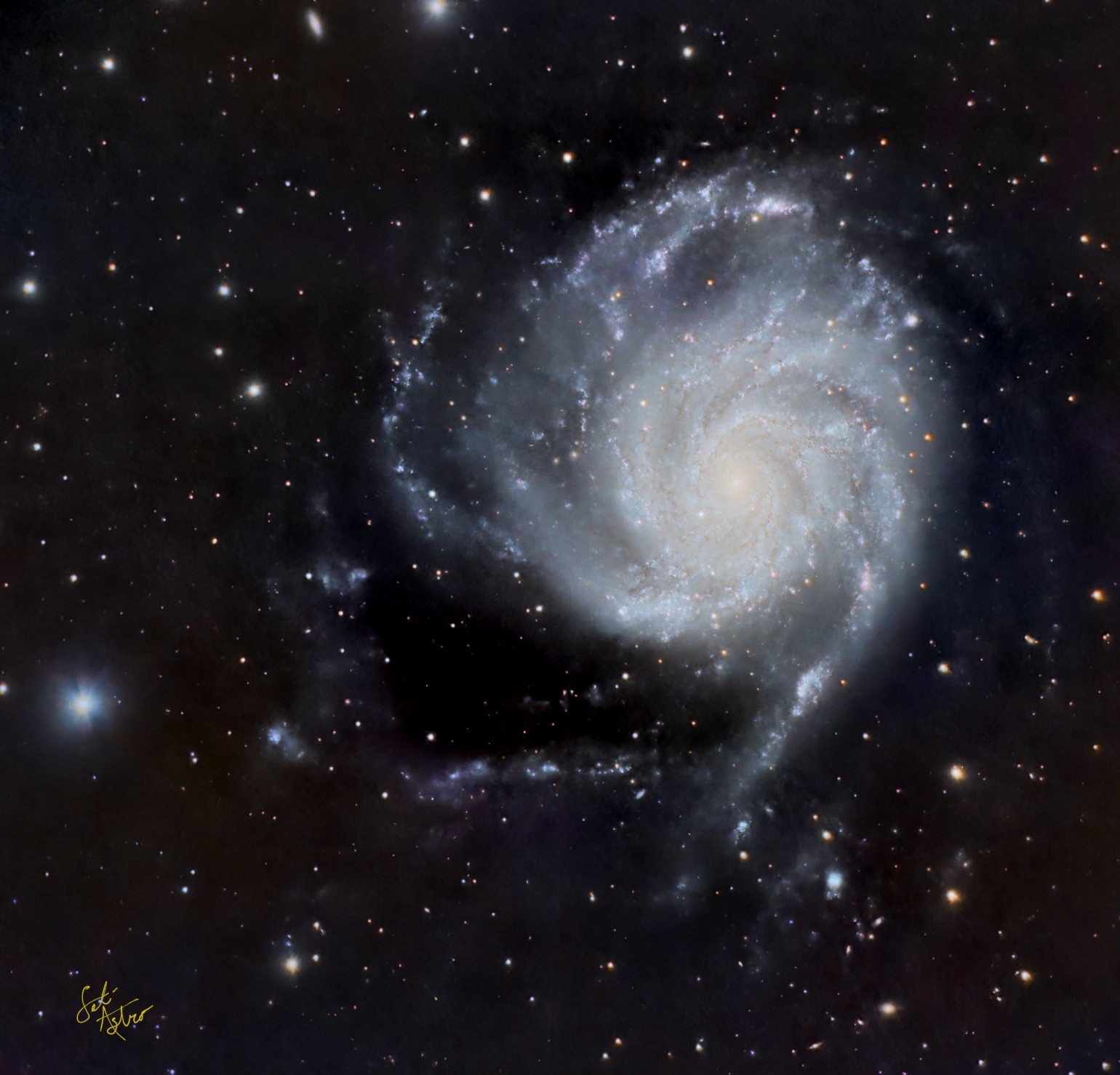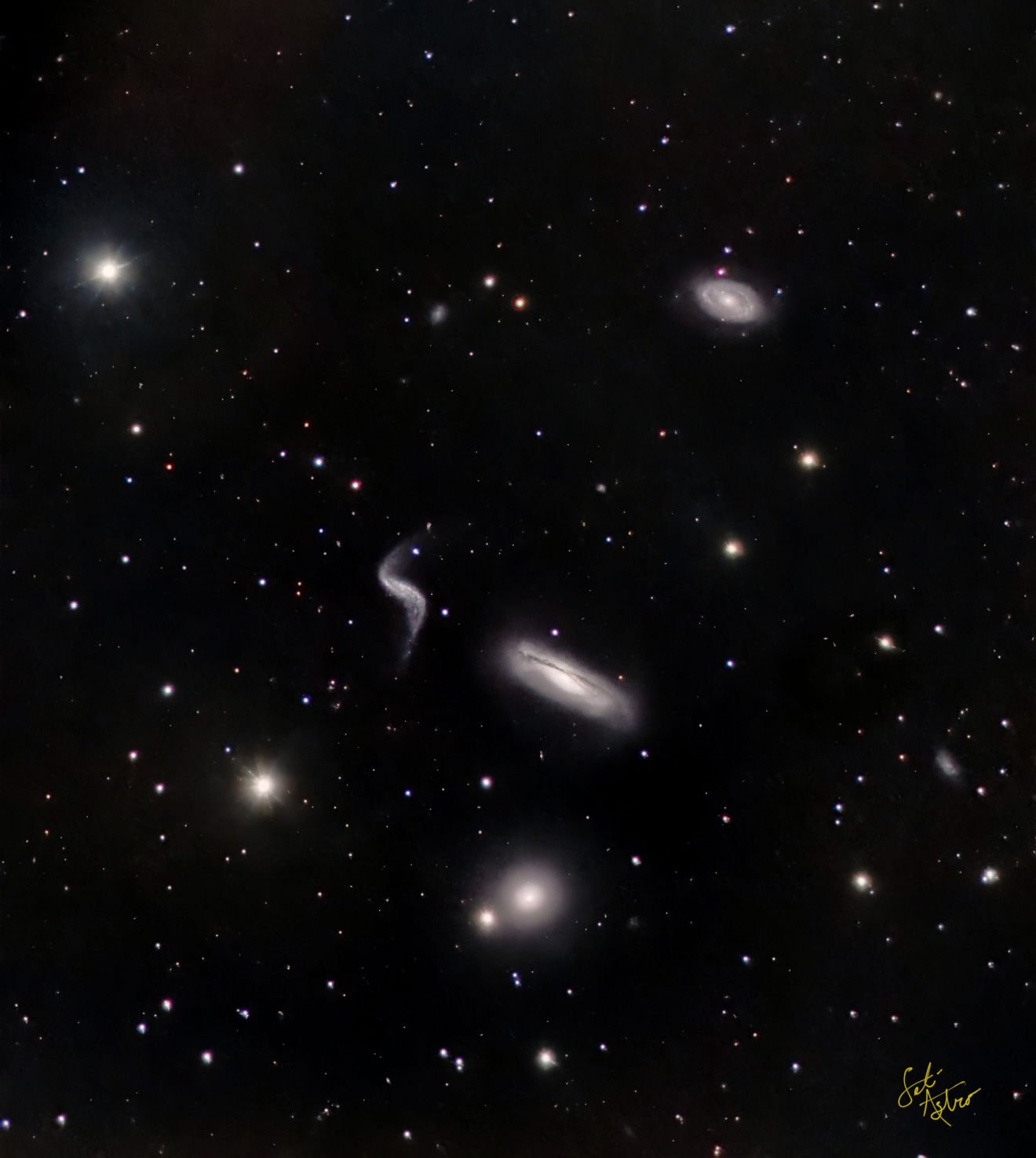Exploring Nebula in Triangulum: LRGBHOS
Acquisition details
Dates:
Oct. 3, 2025
Oct. 7, 2025
Oct. 9 - 16, 2025
Frames:
Antlia EDGE H-alpha 4.5nm 1.25": 6×900″(1h 30′) (gain: 121.00) f/3.8 -10°C bin 1×1
Antlia EDGE H-alpha 4.5nm 1.25": 58×900″(14h 30′) (gain: 121.00) f/3.8 -14°C bin 1×1
Antlia EDGE OIII 4.5 nm 1.25": 67×900″(16h 45′) (gain: 121.00) f/3.8 -15°C bin 1×1
Antlia EDGE SII 4.5 nm 1.25": 22×900″(5h 30′) (gain: 121.00) f/3.8 -12°C bin 1×1
Antlia EDGE SII 4.5 nm 1.25": 10×900″(2h 30′) (gain: 121.00) f/3.8 -14°C bin 1×1
Antlia V-Pro Blue 1.25": 65×180″(3h 15′) (gain: 121.00) f/3.8 -15°C bin 2×2
Antlia V-Pro Green 1.25": 64×180″(3h 12′) (gain: 121.00) f/3.8 -15°C bin 2×2
Antlia V-Pro Luminance 1.25": 256×120″(8h 32′) (gain: 121.00) f/3.8 -14°C bin 1×1
Antlia V-Pro Red 1.25": 8×180″(24′) (gain: 121.00) f/3.8 -12°C bin 2×2
Antlia V-Pro Red 1.25": 56×180″(2h 48′) (gain: 121.00) f/3.8 -15°C bin 2×2
Integration:
58h 56′
This is a target I think many of us find going back to and reshooting whenever we get a some new piece of kit. Back when I imaged Triangulum with my 5” achro refractor I was very excited at all the nebulosity. Now going back to it with the 10” newt the detail is just astonishing. If you have never shot narrowband on a galaxy (let alone the Triangulum) I highly encourage it. Being able to image nebula in a whole other galaxy still just amazes me.
Into The Core of Andromeda: 100hrs on a Familiar Target
A few years ago I took some deep time with Andromeda and my 5" Orion Achro. A world of nebula awaited me when I processed it. Sadly though I missed out on some features and I needed a revisit. Now armed with a much larger and faster OTA (10" F3.8 Imaging Newt) This would give me some extra reach for sure. My initial goal was capturing a very tiny double lobed figure 8 in OIII (the catalogues list it as a SNR). The figure 8 shape always amazed me and thought I could get a little more resolving power from the 10". That particular structure still just puzzles me to no end, but the real surprise lay hidden in the core of Andromeda. I knew there was Ha spiral structures in there but did not expect all the long delicate tendrals in Ha extending out into the galaxy. I spend a long time tying to combine the amazing narrowband continuum subtracted data with the delicate filaments and the LRGB where the core is just so bright. I hope I did my data some justice and present it in the full LRGBHSO palette. I also have the continuum subtracted HSO data in my Realistic2 palette for the mouse over which lets you see some of this delicate structure near the core much more easily too!
Link to Astrobin: https://astrob.in/5rtu6u/0/
Link to my video about my image: https://youtu.be/8srSUbzIYJM
Full Resolution Downloads: Click Image to Download
M94 Croc’s Eye Galaxy
After finishing the Eye of Sauron galaxy I went towards another Eye Galaxy. The Croc's Eye Galaxy M94. I was not expecting the amazing layered structure of the galaxy nor the spirals that reach all the way to the core! I had to utilize both PI's HDRMultiscaleTransform and my own WaveScaleHDR to pull out everything that was there in the center. The Ha and OIII emisssion perfectly framed the center bright core structure as well.
Link to Astrobin: https://astrob.in/z7f13n/0/
My video on it: https://youtu.be/wh-ZVGMLgP4
Ha
OIII
Eye of Sauron: NGC4151
What self respecting nerd would see something called the Eye of Sauron and NOT want to image it?!?! I knew there was probably some dim arms to it so spent a good amount of time capturing Lum data and as always I like to capture a good amount of Ha on any galaxy just to see if I can see anything hidden or *fingers crossed* something unknown.
Nothing not unknown to science in this one but completely unknown to me during imaging and was very intrigued during the post processing. Continuum subtracting I saw the expected knots of emission in NGC4145 but the structure in the Eye of Sauron was soo different. Not the normal knots but almost arm like in structure.
That led me to find an article in 2011 from Astronomy Magazine on it:
https://www.astronomy.com/science/ngc-4151-an-active-black-hole-in-the-eye-of-sauron/
I had no idea this was an active galactic nucleus. I had to take their image and align it to mine and low and behold that structure is the emission jets from the galactic black hole that is beating at its core!!
That has to be the coolest thing I think I have captured from my backyard for sure!
There is just a whole host of countless galaxies throughout the image too, including a faint but visible QSO at a redshift of over 4.6!
Link to Astrobin: https://astrob.in/4mga1v/0/
A Double Galaxy Cluster Around NGC507
Quasars
The more subframes I got the more tiny and faint galaxies I started to see. Led me down the path of just going for it and getting a bunch of luminance data to see what was out there. Boy was I not disappointed. A number of very strange galaxies indeed! The craziest is NGC483 with a very faint wheel of stars surrounding it, reminds me of Hoag's Object, the SDSS color image barely shows the hoop around it. There is also the strangely shaped PGC5002. There are the two large galaxy clusters in the DES catalog to either side of the image as well. Not to mention a quasar sitting at a redshift of 3.46 and 22.5Billion Lightyears away!!
This is one of those images you need to view at full resolution both the non-annotated and annotated versions and explore around. For all the quasars I included the redshift and distance to them as well. There is also a giant cluster of galaxies just below NGC507 that didn't have any easy way of getting the names on if any. That cluster must truly be at a far distance out there!!
Link to Astrobin: https://astrob.in/km4o09/0/
Galaxies
IC342 The Hidden Galaxy
This is my first true imaging test of my iOptron 10" F4 imaging newt. IC342 is also called The Hidden Galaxy. It is located through our galactic plane making it hard to observe as you have to peer through the dust of our own Milky Way. It also tends to give it a redder/rustier appearance (confirmed with SPCC), reminds me of looking at a streetlight through smoky haze at night. It has the 3rd biggest apparent size of any galaxy, only Andromeda and Triangulum is larger.
I wanted to lift the curtain on this Hidden Galaxy and take a decent amount of Ha and OIII narrowband data to run continuum subtraction on and boy was I not disappointed. Not only is the Ha throughout this galaxy amazing (IC342 is classified as a starburst galaxy afterall), but there is a lot of distant gas structure not in ANY catalog I could find. I ran in through my What's In My Image script, looked through Simbad, Vizier, NED, and MAST. This stuff just isn't cataloged yet. There is a particularly bright Ha object that appears almost point like. I don't know if it is a very distant very red galaxy or a very distant planetary nebula in our own milky way.
Either way I have to be very pleased with how deeply my new OTA can peer into space and start finding things that may not have been seen before!!
Link to Astrobin for more details! https://astrob.in/siql6q/0/
Video on my image: https://youtu.be/N1XcmPGyZnU
M83 the Southern Pinwheel Galaxy
Will be the last galaxy for me of the season. Very very low in the southern sky for me, never getting higher than 29 degrees in the sky. I was surprised at the amount of Ha signal in the galaxy and then pulling the catalog I was no longer surprised. Very heavily catalogued and studied!! Something that popped out when i was doing the Continuum Subtraction was an odd object with a shadow in the middle of it. Turns out it is the core of PGC48287 so I am leaning to the side that that is real structure I detected! PGC4867 had some nice dots of Ha in it too. Finally there is a bright Quasar, QSO B1333-298, with a Z shift of 1.9 putting it at a comoving radial distance of 16.7 billion light years!
Hope you all had a successful galaxy season!!
Link to my video: https://youtu.be/0dUafTwudHI
Link to Astrobin: https://astrob.in/i0jstm/0/
Stretch Across M90 M89 and M58
A very nice grouping of Messier objects surrounded by a see of NGC and PGC galaxies and galaxy clusters. I was surprised to see not a lot of additional structure in Ha nor OIII. M58 showing some very cool loops in those gasses though. M89 is almost devoid of structure, but I was able to capture the rarely imaged stellar stream from it. I was not able to find any information on the structure itself and only a few images seem to show it. It is pretty faint and considering the lack of structure in M89 itself it would not be outside the realm of possibility that is a separate low surface brightness galaxy.
There is also a handful of Galaxy Clusters identified. Pulling up the redshift data on some of the galaxies in the cluster shows them to be roughly 1.2Billion Lyrs away!
Link to my video on this image: https://youtu.be/Iy2JbmsquBM
Link to Astrobin: https://astrob.in/3br257/0/
New Blue Scales on the Koi Fish (OIII Structures in NGC4559)
While processing early data I noticed some nice structure in OIII in NGC4559. That led me to dig into various catalogs to see what was listed. After not finding anything and doing comparisons to other deep sky survey images, it triggered me to go much deeper on OIII to ensure it was true signal and not noise. I ended up getting the help of a couple of collaborators to get some extra OIII data as well. There is in fact a lot of non-cataloged structure in both Ha and OIII in this galaxy. It is just not a well studied galaxy. It may not be as spectacular as the OIII arc over Andromeda but I am very excited to share new structures not in the scientific literature with the community!!
There is a gorgeous cluster of galaxies off to the lower left of the Koi Fish including PGC1811760 that showed a ton of OIII during the continuum subtraction process.
The final image is a blend of mine and my collaborators final images. I want to thank Carl and Sean for their telescope time and involvement with my interest in this object!
Links to them:
https://applewood-astro.com/
https://www.astrobin.com/users/SM90/
Link to more on Astrobin: https://astrob.in/x7j807/0/
Into the Maelstrom of M101 the Pinwheel Galaxy
Combining over 13hrs of RGB and 28hrs of SHO narrowband to reveal the galactic maelstrom in the heart of M101 The Pinwheel Galaxy.
I struggled with how I wanted to present the data and settled on an RGB-Continuum Subtracted HSO Foraxx Palette, I am presenting the full RGBHSO version and just the HSO foraxx versions. I kept the stars in both and I thought it added to the images.
What I find really surprising are the structures not only in M101 but in NGC5474, NGC5477, and NGC5486. There are some HII regions designated in the SRM2012 catalog, especially for NGC5474, but the others really haven't been studied much.
The other very cool item is NGC5471. There is really nice structure in all 3 narrowband channels and Hubble actually did some observing on it as well.
Link to Astrobin: https://astrob.in/336nmk/0/
Video I made on this image: https://youtu.be/OyvWC2F5hyw
All this data screams for some interaction, so please check out the interactive slider I made for this image too (works only on desktop right now)!
https://www.setiastro.com/m101slider
Deep Gases Around M81 M82 and NGC3077
I was intrigued after seeing images of the "cap" on M82 and wanted to take a deep look (40hrs) at the M81/M82 region in both Ha and OIII. There is a lot of structure around these galaxies and a large arc extending below NGC3077 that I have never seen before. There is also the very intriguing Ho IX 9&10 hydrogen structures just below M81.
In M82 you can see the hydrogen reaching up to the cap although I have read some controversy if that is coincidence or if it is truly part of the starburst outflow.
In the large loop extending below NGC3077 there is listed [CVL2009] Garland-3 identified as the brighter bead on the right of the loop. If anyone has more information on this structure that would be very interesting to read about! There is a ton of cataloged items in M81 to explore more fully. Will be working on uploading a detailed annotated version.
I did find a great paper on Ho IX 9&10: https://www.aanda.org/articles/aa/pdf/2005/01/aa1200.pdf
Link to details on Astrobin: https://astrob.in/kf7vjp/0/
Link to my Video: https://youtu.be/xE-BmVQXg78
Tempest in the Core of M106
Using 48x900" each for Ha and OIII you can really see the tempest in the core of M106 and the giant streamer coming out of the galaxy. There is a lot of deformation as well from past interations.
The narrowband data added greatly to many of the surrounding and background galaxies too. Looking through the annotations I decided to look up all the redshifts of the quasars present in my image. (I have included the redshift and comoving radial distance in the annotated version).
By far the farthest object I have seen in any if my images Quasar SDSS J121451.31+471748.9 has a redshift z=3.176 and a comoving radial distance at a staggering 21.7 Billion Lightyears!! The light from that object is over 11 Billion years old!
Link to Astrobin: https://astrob.in/ri2is3/0/
Going deep in narrowband paid off! This galaxy is bursting with just the largest gas structures I have taken in a galaxy so far! At this resolution we are 10.8lightyears per pixel (M33 is 2.73million lightyears away and my resolution is .818arcsec/px). That means that these structures are stretching 1,000's of lightyears across!! All 3 channels (S, H, and O) came through very strong and I combined them in a normal hubble palette. I then combined that with an RGB image to produce the full M33 Triangulum in all its gassy glory! The structures are just remarkable.
M33 The Triangulum Galaxy
Andromeda Galaxy
SNR BW-59
Composite of all master images used.
80 hrs of integration on our neighbor galaxy Andromeda
Little bit of a labor of love.
Really wanted to go very deep with narrowband filters on Andromeda to see all the nebulae, supernova remnants, and other gases.
This is a Red Channel enhanced with Hydrogen data, Green Channel enhanced with SII data, and Blue Channel enhanced with OIII data composite.
During processing I found a figure 8 in the OIII data and took a lot of effort but narrowed it down to a supernova remnant, SNR BW-59. You can just see it in the DSS B band and GALEX. It is at the correct coordinates (00 44 18.6, +41 18 53). I started a discussion of it here at
https://www.cloudynights.com/topic/890606-80hrs-on-andromeda/
I really love all the different nebula region throughout though. Some remind me of objects in our own Milky Way
Went back and forth on how to combine all the data and this is where I landed. How many nebula can you find??
Acquisition details on Astrobin: https://www.astrobin.com/1mzemi/
Video I made on this image: https://youtu.be/B-b8SsDmMdE
Triplet in Draco
Galaxy Trio in Draco.
NCG 5985, 5982, and 5981 all roughly 130MLy away. Although visually they for a nice trio of galaxies there is no current evidence they are gravitationally bound to form a true galaxy group.
Acquisition details:
M90 in Virgo
M90 Spiral Galaxy in the Constellation Virgo.
The central core has both older stars and illuminated gas and dust from supernova giving the red appearance.
I thought it was also something cool is that the galaxy is blueshifted whereas most galaxies are redshifted, meaning this is actually moving toward our own home galaxy of the Milky Way at ~383km/sec.
Acquisition details:
M5 The Rose Cluster
M5 The Rose Cluster
~25,000 lightyears from us.
One of the last RGB targets I'll be getting this spring as nebula season starts ramping up soon. Working on 1 last galaxy then it is on to faint wisps of interstellar gas and dust.
Acquisition details:
NGC 5907 The Splinter Galaxy
NGC 5907 The Splinter Galaxy.
A fairly unique galaxy as the stars all have very low metallicity with few giant stars. The majority of the stars are dwarf stars.
Acquisition details:
M3 Globular Cluster in Canes Venatici.
Great target to image while the moon was near full. Home of 500,000 stars it lies 32600 lightyears away. It is quite isolated being about 31600 lightyears above the galactic plane. M3 is also home to 274 known variable stars, by far the most found in any other globular cluster known.
Acquisition details:
M3 Cluster in Canes Venatici
M63 The Sunflower Galaxy
M63 Sunflower Galaxy.
Roughly 28 million lightyears away. It is in the same galaxy group as the Whirlpool galaxy. Although it is a spiral galaxy, there is no central bar, now large scale spirals (like our own Milky Way). There is some discrepancy as to how far away it actually is based on different measurement systems.
There is a very faint star stream that was thrown off from a previous merger that i cropped in and brightened to show.
Full Acquisition details on Astrobin:
The Coma Cluster
The Coma Cluster.
Clouds cleared up and I was able to image it last night. Home to ~1000 galaxies. There are just 8 Tycho named stars in the entire field of this view. Almost everything else is a galaxy. Sitting ~320 million lightyears from earth it was one of the first places where anomalies in the velocities of galaxies led Fritz Zwicky to write that they must be held together by Dark Matter. I zoomed in on some parts just to show some cropped images how many galaxies are all over this image.
Acquisition details!
Coma Cluster Annotated
M64 The Blackeye Galaxy
M64 The Blackeye Galaxy.
It is 17 million lightyears away. There is a very large dark band of dust near the core giving the galaxy its name. I did image this target back in 2015 (link below) using a DSLR and figured it was worth revisiting. I am glad I did.
New acquisition details:
Link to old picture from 2015:
M51 The Whirlpool Galaxy
M51 The Whirlpool Galaxy.
It comprises of an elliptical galaxy interacting with the main spiral kicking off those beautiful splays of star streams. I also highlighted some small galaxies in the background and distances to them along with a second annotated version.
Acquisition details on Astrobin:
NGC 3628 Hamburger in Leo
NGC3628 the Hamburger Galaxy.
One of the Leo Triplet galaxies. Also who doesnt like a good hamburger??
Located about 35 million lightyears away. Since it is seen edge on it hides its spiral structure, but zooming in reveals multiple dark lane structure.
Acquisition details
M65 and M66
Duo in the Triplet
M65 and M66, The Duo in the Leo Triplet.
~35million lightyears away. In M65 (upper galaxy) there are more older than newer stars making it redder in color as compared to M66 (lower galaxy) which has a lot of new stars making those blue patches which are surrounded by dark dust lanes.
Acquisition details on Astrobin:
ARP 94
Arp94 (NGC3227) on the Atlas of Peculiar Galaxies.
A dwarf elliptical galaxy is interacting with a spiral galaxy throwing off huge blobs of stars from both in the process. Harder to see are two very small background galaxies interacting in the top middle of the image and very faint integrated flux nebula running from mid upper to the right of the image.
Acquisition details on Astrobin
NGC 4565 The Needle Galaxy
NGC4565 The Needle Galaxy.
Beautiful edge on galaxy. 30-50million lightyears away south of constellation of Leo in Coma Berenices. Once again there are some nice far distant galaxies in the image especially to the lower edge of the frame.
Acquisition details on Astrobin:
M101 The Pinwheel Galaxy
M101 The Pinwheel Galaxy.
Really close by at 21 million lightyears away near the Big Dipper. Crazy bit is it has around 1 trillion stars in it! I love how you can see so many far away galaxies in the background in my image.
Full acquisition details loaded on Astrobin:
Quartet in Leo
The Leo Quartet.
LRGB data taken over 2 nights totally 5hrs of exposure. They are gravitationally bound and interacting ~80 to 100 million lightyears away.
I love NGC 3187, the one getting ripped apart.
Astrobin details:
M81 Bode’s Galaxy
M81 also known as Bode's Galaxy.
4hours of exposure with dedicated exposure time in hydrogen-alpha light to bring out the red nebulosity in the galaxy itself. These (red blobs in the arms and core) are huge star forming regions very similar to the Orion Nebula in our galaxy. It lies 12 million light years from our Milky Way. Practically neighbors!
Acquisition details:
Markarian’s Chain
Markarian's Chain.
17 Galaxies in the Virgo Cluster.
The two in the middle are known as The Eyes. What is crazy is each of these galaxies on average has 400 billion stars! That's just under 7 trillion stars in this image!
Acquisition details:
The Eyes
M45 The Pleiades
M45 The Pleiades
New evidence looking at the myth around this cluster suggests the story of the Pleiades may be the oldest story in history stretching back further than 100,000 years into our oral past!
Link to some arguments for this: https://theconversation.com/the-worlds-oldest-story-astronomers-say-global-myths-about-seven-sisters-stars-may-reach-back-100-000-years-151568
Acquisition details:
Vega
Tabby’s Star
KIC 8462852
The most intersting star I have imaged. Tabby's Star aka KIC 8462852 has a non-zero chance of actually having alien megastructures around it! There have been papers going back and forth and most interesting we have now identified similar behavior on some stars near it roughly in a spherical region. Could be an expanding civilization!
My first image of a Quasar. This is roughly 8.6Billion Lightyears from Earth at roughly a redshift of z=1.337
That means the photons entering the telescope were travelling for about twice the age of our solar system!
Not the most impressive of images, but the big blob in the middle is the star Sirius, the rings around it are a telescope artifact due to the wave nature of light called Airy rings. The interesting bit in the image is that little dot to the left. That is Sirius B! It orbits Sirius roughly every 6 years, it has about the diameter of the Earth and weighs in at roughly 102% of our sun’s mass!

